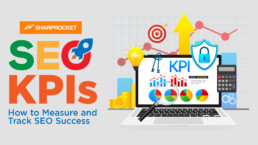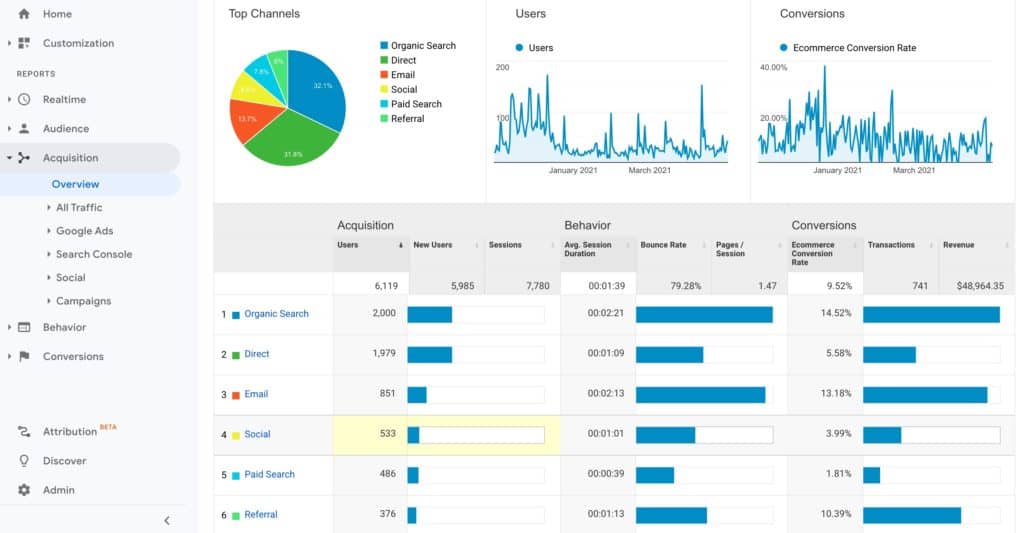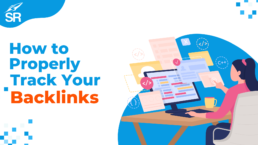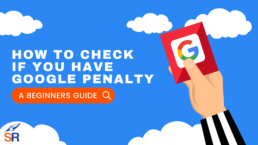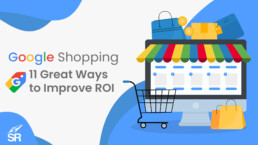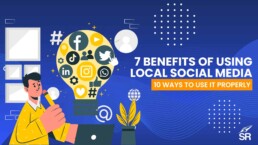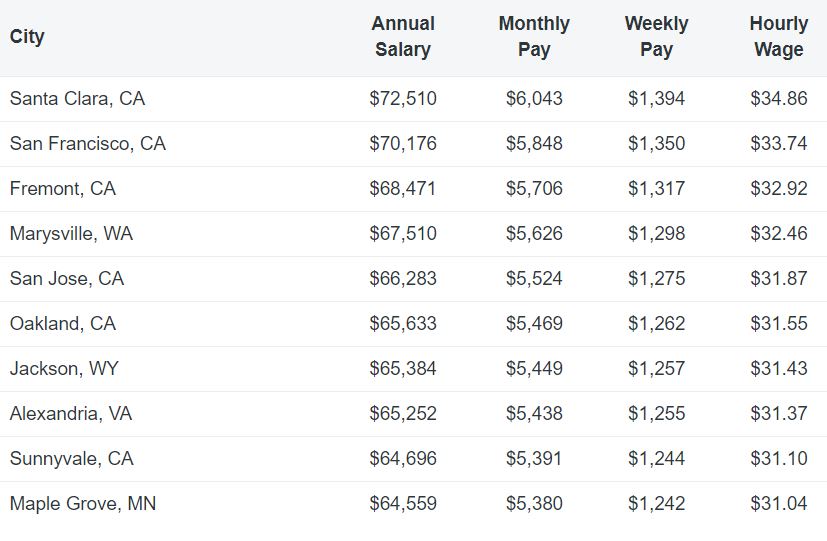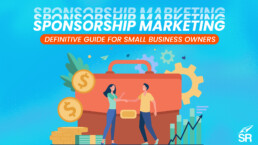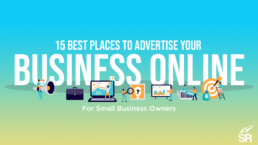What is the AIDA Model? Examples and Templates For Email Outreach
Email outreach is the process of contacting potential customers or partners via email to promote your product or service. The goal of email outreach is to build relationships and generate new business opportunities. To be successful, email outreach must be targeted, personalized and relevant. The recipient must feel that the email is valuable and worth their time.
A great way to achieve this is to use the AIDA model when crafting your email outreach strategy. AIDA stands for Attention, Interest, Desire and Action. By following this model, you can create emails that are more likely to capture the attention of your target recipients and prompt them to take action.
What is AIDA Model?
American Advertiser Elias St. Elmo Lewis is the one who created the AIDA funnel back in 1898. This funnel provided great help to salespeople in guiding their customers when it comes to the process of purchasing. Currently, the AIDA model is widely used in guiding customers throughout the decision-making process when purchasing something. What really is AIDA?
The AIDA model is a well-known framework for designing marketing and advertising campaigns. It stands for Attention, Interest, Desire, and Action. The idea is to first grab the attention of your target audience, and then create interest in what you're offering, followed by a desire for the product or service. Finally, you need to motivate them to take action, such as making a purchase.
There are many different ways to apply the AIDA model to email outreach campaigns. For example, you could start by offering a discount or freebie in the subject line to get attention. Then, in the body of the email, you could provide more information about the product or service and why it's valuable. You could also include a call-to-action (CTA) urging recipients to take advantage of the offer before it expires.
The AIDA model is just one tool that can be used to improve email outreach campaigns. However, it's a powerful one that can help you increase open rates, click-through rates, and conversions.
If you are looking to improve your email outreach campaigns, the AIDA model can help you to create more effective and compelling email copy. The AIDA model can help you to understand how each element of the campaign works together so that you can create more engaging email campaigns that are more likely to result in a purchase.
Additionally, the AIDA model can help you to identify areas where your email campaigns could be improved, allowing you to make necessary changes to improve your results. By understanding how the AIDA model works, you can create more engaging email campaigns that are more likely to result in a purchase.
If you are looking for an overview of how the AIDA model works, or if you need help creating effective and compelling email copy, then check out our blog post on how to use the AIDA copywriting model in email outreach.
Why Is AIDA Important?
Numerous brands use AIDA because it helps determine how they ought to distribute their messages to their clients and prospective clients. Marketing messages are very important in targeting a specific audience.
1. Better Understanding Of Your Email's Interaction With Your Recipients
AIDA provides a better understanding of how your email is being read and interacted with, both by you and your recipients. The model helps you to see how each element of your email contributes to the overall goal of the campaign. For example, the attention-grabbing subject line should be followed by interest-building content in the body of the email.
This, in turn, should lead to a call to action that encourages recipients to take advantage of the offer. By understanding how each element works together, you can create more effective email outreach campaigns that improve open rates, click-through rates, and conversions. Link building can also help in this process.
2. Allows the Measure of the Effectiveness Of Email Campaigns
AIDA allows you to measure the effectiveness of your email campaigns, providing you with the necessary insights to make informed decisions about your email marketing strategy.
It is a powerful tool that can help you to measure the effectiveness of your email campaigns. By understanding how each element of the campaign works together, you can make adjustments to improve open rates, click-through rates, and conversions.
Additionally, by applying the model to your email outreach campaigns, you can get a better understanding of how your recipients are interacting with your emails. This insight can help you to create more effective campaigns that achieve your desired results.
3. Helps Identify Unsubscribes and Bounce Rates
AIDA helps you to identify unsubscribes and bounce rates so that you can improve the effectiveness of your email campaigns accordingly.
It's important to identify unsubscribes and bounce rates so that you can improve the effectiveness of your email campaigns. Unsubscribe rates can give you an indication of how well your campaign is performing and whether or not your target audience is interested in the content you're providing.
Bounce rates, on the other hand, can help you to identify whether or not your emails are being delivered to the intended recipients. By understanding unsubscribe and bounce rates, you can make necessary changes to your email campaigns to improve their effectiveness.
4. Helps Create More Engaging Email Campaigns
AIDA enables you to create more engaging email campaigns by understanding the different types of content that recipients are likely to engage with.
It's important to create engaging email campaigns in order to improve open rates, click-through rates, and conversions. The AIDA model can help you to understand how each element of the campaign works together so that you can create more effective outreach campaigns.
5. Helps Increase Conversion Rates
AIDA can help you to increase your conversion rates by providing you with valuable insights into what content is most likely to result in a purchase.
To make valuable insights that will increase conversion rates, first consider what content is most likely to result in a purchase. By understanding what content is most engaging, you can create email campaigns that convert more visitors into buyers.
6. Helps Write Compelling and Effective Email Copy
AIDA can help you to write more effective, compelling email copy. You need an effective and compelling email copy in order to improve open rates, click-through rates, and conversions. The AIDA model can help you to understand how each element of the campaign works together so that you can create more effective outreach campaigns.
7. Provides Better Content That Generates Engagements
AIDA can help you to understand what content will resonate with your target audience and generate engagement.
To create successful email campaigns, you need to understand what content will resonate with your target audience and generate engagement. The AIDA model can help you to understand how each element of the campaign works together including local link building so that you can create more effective outreach campaigns.
8. Helps Craft Powerful CTA Buttons
AIDA can also help you to craft powerful CTA buttons and landing pages that will convert visitors into customers.
The AIDA model can also help you to craft powerful CTA buttons and landing pages that will convert visitors into customers. CTA buttons are important because they help to guide users through the purchase process and encourage them to take action. By understanding how the AIDA model works, you can create more effective CTAs that will improve conversion rates.
When creating a CTA, always remember to utilize practical language. Avoid stuffing it with a lot of junk and other confusing words. Your main goal is to allow people to click on these links and this confusing jargons will only irritate them. Additionally, think of the problem that you are trying to solve. Communicate well with your audience.
How To Use AIDA Copywriting Model in Email Outreach?
The AIDA copywriting model is a great way to improve email outreach. By focusing on creating interesting and informative content writing, you can generate interest and keep readers engaged. Moreover, it is important to include a call-to-action (CTA) in order to motivate readers to take action. By using the AIDA model, businesses can improve their content marketing strategy and see better results.
The AIDA model is important because it provides a framework for designing marketing and advertising campaigns that are effective in grabbing attention, generating interest, and motivating action. By using the AIDA model, businesses can improve their email outreach campaigns and see an increase in open rates, click-through rates, and conversions. Now, let's get to know the four stages of AIDA - Attention, Interest, Desire, and Action.
Attention
To reach potential customers, marketers need to use strategies that will capture their attention. This can include using SEO and visual media such as images and videos. There are several effective approaches that you can do to get the attention of your prospective customers. Some of these approaches include placement of ads in a place easily noticeable by visitors, personalized messages or those introduced as direct marketing, and shock value advertising or those that use engaging graphics, which are truly hard to ignore. Here are a few tips to grab the attention of customers using subject lines.
- Keep it Short - One of the most effective ways to grab attention is by using short subject lines. The shorter, the better. Not only will it be easier to scan, but it also results in a higher open rate since people are more likely to open an email if it's short and to the point.
- Titillate Their Curiosity - Use intriguing keywords in the subject line that will pique the reader's curiosity. For example, "What's in the box?" or "Uncovering the Dark Secrets of XYZ Company."
- Personalization - One of the best ways to grab attention is by personalizing the email for each individual. This can be done by using first and last names, or other identifying information.
Interest
Once a reader has taken notice of your email, you need to keep them interested in what you have to say. By utilizing effective content marketing strategies, you can keep readers engaged and motivated to take action. Some of the most common methods used to engage readers are by providing valuable information, answering questions, sharing stories and experiences, and providing tips and advice. For customers to pay more attention to your opening lines, follow these tips.
- Be Original - always use plagiarism-free lines because they surely hit customers like some fresh air. Avoid using cliched opening lines because they are already used more than a hundred times.
- Stick to The Point - Keep your opening lines short, to the point, and relevant to the content you're going to present. Don't waste your reader's time by trying to be overly poetic or dramatic.
- Be Humorous - break the ice by using humorous opening lines. This will ensure that your customers are always in the loop.
Desire
You can develop the desire of your customers by selling a particular feature of a product, showing its versatility, and its superiority among other similar items. In this stage, you will be presenting the product's value proposition together with its enticing benefits which in turn will lead to the decision to buy the item.
- Jump The Bandwagon - a lot of people prefer to buy products that others are buying. In this case, you can add a tag to your products such as 'bestselling product' as this will surely spark the desire of your customers.
- Use the USP - which stands for Unique Selling Proposition, this will help you stand out amidst the pool of competitors. You must highlight the USP of your product in your email, and this will keep your customers hooked up.
- Limited Time Offer - most of the time, customers feel unique whenever they purchase a limited-time offer of products or services. This is a sure way to spark their desire instantaneously.
Action
One way to encourage customers to take action is to create a sense of urgency. This can be done by offering a discount or freebie that is only available for a limited time. You could also include a call-to-action (CTA) urging recipients to take advantage of the offer before it expires. By creating a sense of urgency, you can motivate customers to take action and convert them into paying customers.
- Keep It Direct To the Point - throughout your email, you did everything to entice your potential customers. As for the CTA section, make it short and direct.
- Avoid Asking Too Much - don't intimidate your customers by asking too many questions. If you do so, your potential customers will leave you. If you need to explain something or need several questions answered, you can redirect them into a website sales funnel.
- It Should Stand Out - Ensure that your CTA stands out because your customers are reading hundreds of emails every day. Use unique fonts and colors for a better yield. This is very important to keep your customers hooked up.
Frequently Asked Questions:
What is the difference between copywriting AIDA and PAS?
There are a few key differences between the AIDA copywriting model and the PAS model. First, the AIDA model focuses on creating interest, while the PAS model focuses on creating desire. Additionally, the AIDA model includes a call-to-action (CTA), while the PAS model does not. Finally, the AIDA model is more comprehensive and includes steps for getting attention, building interest, creating desire, and taking action.
What companies use AIDA?
Many companies use the AIDA copywriting model to improve their content marketing strategy. Nike, Apple and Coca-Cola are some of the companies that use AIDA. They have successfully perfected the use of this model and were able to carefully identify their consumer base, aiming particularly on an intended audience.
Is the AIDA model still relevant?
The AIDA model is still relevant for businesses today. This model helps businesses to generate interest in their products and services, and keep readers engaged. Additionally, the AIDA model includes a call-to-action (CTA), which is important for motivating readers to take action. In fact, there are still a lot of huge companies that use AIDA to create strong, attention-grabbing advertisements.
How is AIDA used in social media?
The AIDA copywriting model can be used to improve a business's social media strategy. By creating interesting and informative content, businesses can generate interest and keep readers engaged.
Who invented the AIDA model?
The AIDA model was invented by Elias St. Elmo Lewis in the late 1800s. Lewis was a pioneer in the field of marketing and copywriting, and is credited with developing several key concepts that are still used today. The AIDA model is just one of many important contributions that Lewis made to the field of marketing.
What is AIDA funnel?
The AIDA funnel is a model that is used to improve content marketing strategy. The acronym stands for Attention, Interest, Desire, and Action. The model helps businesses to generate interest in their products and services, and keep readers engaged.
AIDA introduces a very effective copywriting formula that particularly focuses on raising the conversion rate. This model is considered a guideline to maximize customer satisfaction and engagement.
SEO KPIs: How to Measure and Track SEO Success
According to Search Engine Journal, organic search generates the highest return on investment of any marketing channel, with 49 percent of marketers believing it.
The numbers alone should be enough to convince any business owner or marketing manager that SEO is worth their time and money. But as with any marketing strategy, it's important to set goals and track progress to ensure success.
That's where SEO KPIs come in.
KPIs, or Key Performance Indicators, are metrics used to measure and track progress towards a specific goal. In the context of SEO, they can be used to track everything from website traffic to keyword rankings.
Choosing the right SEO KPIs will depend on your specific goals and objectives. However, there are some general metrics that all businesses should track.
Website Traffic
One of the most important SEO KPIs is website traffic. This metric measures the number of visitors to your website from all sources, including organic search, direct traffic, and referral traffic.
Website traffic is a good indicator of the overall health of your SEO efforts. If you're seeing an increase in website traffic, it's likely that your SEO strategy is working. Conversely, a decrease in website traffic could be a sign that something is wrong.
There are a number of ways to track website traffic, including Google Analytics and other web analytics tools.
Organic Search Traffic
Organic search traffic is the number of visitors to your website from organic search results. This metric is important because it measures the success of your SEO efforts in attracting visitors from search engines.
Organic search traffic can be tracked using Google Analytics and other web analytics tools.
Keyword Rankings
Another important SEO KPI is keyword rankings. This metric measures how well your website ranks for specific keywords in search engine results pages (SERPs).
Tracking keyword rankings can help you identify which keywords are driving traffic to your website and which ones need more work. There are a number of tools that you can use to track keyword rankings, including Google Search Console and Moz's Keyword Explorer.
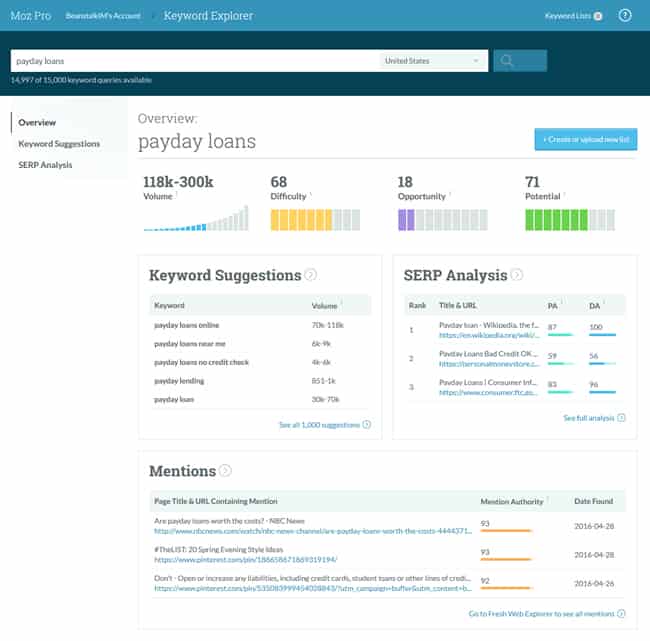

Backlinks
Backlinks are links from other websites to your website. They're important because they're one of the factors that search engines use to rank websites in SERPs.
The number of backlinks that a website has is a good indicator of the website's popularity and authority. The more backlinks a website has, the higher it is likely to rank in SERPs.
Backlinks can be tracked using Google Search Console and other webmaster tools.
Some notable tools for backlink tracking are as follows:
- Majestic
- Moz
- Ahrefs
- SEMrush
- SEO SpyGlass
- Raven Tools
- LinkResearchTools
Which Types of Backlinks Should You Be Tracking?
Not all backlinks are created equal. Some backlinks are more valuable than others.
The most valuable backlinks are from websites that are popular, have high domain authority, and are relevant to your website.
Google values three factors in ranking. These are Relevance, Trust and Power.
Relevance:This is how much your website is related to the backlink website. A backlink from a website about “dogs” will be more valuable if your website is also about “dogs”.
Trust: This measures how trustworthy the backlinking website is. Google considers websites with many backlinks as more trustworthy than those with fewer backlinks.
Power: This measures the popularity of the backlinking website. A website with many visitors is more popular than a website with fewer visitors.
To track the value of your backlinks, you can use a tool like Moz's Link Explorer. This tool will show you the domain authority of the linking website, as well as the page authority of the specific page that's linking to you.
Social Shares
Social shares are the number of times your content is shared on social media. This metric is important because it can help to increase the reach of your content and attract new visitors to your website.
There are a number of ways to track social shares, including using social media analytics tools such as Hootsuite Insights and Sprout Social.
New Content
Publishing new content is an important part of any SEO strategy. This metric measures how much new content you're publishing on your website.
New content can help to attract new visitors to your website, as well as keep existing visitors coming back for more. It can also help to improve your website's ranking in SERPs.
To track the amount of new content you're publishing, you can use a tool like Google Analytics. This will show you how much traffic your website is getting from new visitors.
You can also use a tool like WordPress to track how many new posts or pages you're publishing on your website. Additionally, Surfer SEO has a Content Editor that allows users to create new optimized content and track their progress.
Organic Visibility
Organic visibility is the number of times your website appears in SERPs. This metric is important because it measures how visible your website is to potential visitors.
There are a number of ways to track organic visibility, including using Google Search Console and other webmaster tools. Additionally, you can use a tool like Moz's Rank Tracker to track your website's ranking in SERPs.
Here are some quick tips on how to improve your organic visibility:
Optimizing Titles and Meta Descriptions
Your title and meta description are two of the most important elements on your website. These are what show up in SERPs, so it's important to make sure they're optimized for your target keywords.
To do this, you can use a tool like Surfer SEO's Title Optimizer. This tool will help you to create optimized titles and meta descriptions for your website.
Making your website mobile-friendly
Making sure your website is mobile-friendly is important for two reasons. First, more and more people are using mobile devices to access the internet. Second, Google has announced that they will be using mobile-friendliness as a ranking factor in their algorithm.
To make sure your website is mobile-friendly, you can use a tool like Google's Mobile-Friendly Test. This tool will analyze your website and tell you if it is mobile-friendly or not.
Improving website speed
Website speed is another important ranking factor in Google's algorithm. In addition, users are more likely to abandon a website that takes too long to load.
To improve your website speed, you can use a tool like Google's PageSpeed Insights. This tool will analyze your website and give you specific recommendations on how to improve your speed.
Page Load Time
Page load time is the amount of time it takes for a page on your website to load. This metric is important because it can affect your website's ranking in SERPs and the user experience of your visitors.
Conversions
Conversions are the number of visitors to your website who take the desired action, such as making a purchase or signing up for a newsletter. This metric is important because it measures whether your SEO efforts are resulting in real-world results.
Some examples of conversions are:
Affiliate Clicks:
Affiliate clicks are the number of times an affiliate link is clicked. This metric is important for measuring the success of your affiliate marketing efforts.
Affiliate clicks can be tracked using a number of tools, including Google Analytics and Clickbank.
E-commerce Sales:
E-commerce sales are the total value of all sales made through your online store. This metric is important for measuring the success of your e-commerce business.
E-commerce sales can be tracked using a number of tools, including Google Analytics and Shopify.
Newsletter Signups:
Newsletter signups are the number of people who sign up for your newsletter. This metric is important for measuring the success of your content marketing efforts.
Newsletter signups can be tracked using a number of tools, including MailChimp and Constant Contact.
Leads:
Leads are the contact information of people who have expressed interest in your product or service. This metric is important for measuring the success of your lead generation efforts.
Leads can be tracked using a number of tools, including Salesforce and HubSpot.
Bounce Rate
Bounce rate is the percentage of visitors to your website who leave after viewing only one page. This metric is important because it measures how well your website is holding the attention of its visitors.
Bounce rate can be tracked using a number of tools, including Google Analytics and Pingdom.
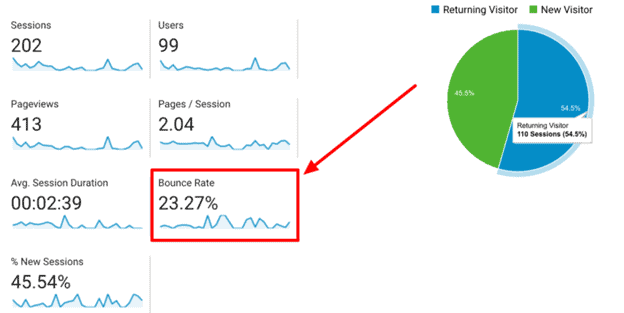

There are a number of ways to track conversions, including using web analytics tools such as Google Analytics and conversion tracking tools such as Crazy Egg.
Improve What You Can Measure
These are some of the most important SEO KPIs that all businesses should track. By tracking these metrics, you can measure the success of your SEO efforts and make necessary adjustments to ensure that your website is ranking highly in SERPs.
SEO KPIs are important metrics to track the progress of your SEO efforts. If you are tracking the right KPIs, you can ensure that your SEO strategy is on track and achieving its objectives.
What are some other important SEO KPIs that businesses should track? Let us know in the comments below!
Frequently Asked Questions
Can you track backlinks in Google Analytics?
Yes, you can track backlinks in Google Analytics by using the Inbound Links report.
To find this report, log into your Google Analytics account and navigate to Acquisition > All Traffic > Channels. Then, click on the Organic Search tab and scroll down to the Inbound Links section.
Why are backlinks important for SEO?
Backlinks are important for SEO because they act as a vote of confidence from other websites. When a website links to your website, it is effectively saying that your website is a good source of information on the topic that it is linking to.
Here are 4 reasons why backlinks are important for SEO:
1. They Improve Your Rankings in SERPs
One of the most important ways that backlinks improve your SEO is by helping you to rank higher in SERPs. Google uses a metric called PageRank to determine the ranking of websites in its search results.
PageRank is based on the number and quality of backlinks pointing to a website. So, websites with more and higher-quality backlinks will tend to rank higher in SERPs than those with fewer and lower-quality backlinks.
2. They Help You to Get More Traffic from Google
Another way that backlinks improve your SEO is by helping you to get more traffic from Google.
Google uses backlinks as one of the main factors in its algorithm for determining a website's PageRank. So, the more backlinks you have pointing to your website, the higher your PageRank will be, and the more traffic you'll get from Google.
3. They Help You to Build Relationships with Other Websites
Backlinks can also help you to build relationships with other websites. When you get a backlink from another website, it's a good opportunity to reach out to the site owner and let them know.
This can help you to build a relationship with the site owner, which can be beneficial for your SEO. For example, if the site owner is happy with the relationship, they may be more likely to link to your website again in the future.
4. They Make Your Website Look More Trustworthy
Backlinks can also help to make your website look more trustworthy. This is because backlinks from high-quality websites act as a vote of confidence from those websites.
When Google sees that your website has backlinks from high-quality websites, it will be more likely to trust your website and rank it higher in SERPs.
Is bounce rate a good KPI?
Bounce rate is a good KPI because it measures how well your website is holding the attention of its visitors. A high bounce rate indicates that visitors are leaving your website quickly, which could be a sign that your website is not relevant or interesting to them.
A low bounce rate, on the other hand, indicates that visitors are staying on your website and engaging with your content. This is a good sign that your website is relevant and interesting to them.
What is a KPI dashboard?
A KPI dashboard is a tool that allows you to track, visualize, and analyze your KPIs in one place. Dashboards can be used to track any kind of metric, but they are especially useful for tracking KPIs because they allow you to see all of your KPIs in one place and compare them side-by-side.
How to Properly Track Your Backlinks - A Beginners Guide
Considered a supreme ranking factor for search engine optimization, backlinks are basically inbound links that point back to your website from other websites.
Backlinko conducted a study revealing that the number of domains linking to a page was the most significant predictor of Google ranks.
Since the quality of your backlinks can make a huge impact on your website’s SEO, you need to keep track of them to ensure that they are helping and not hindering your progress.
After all, according to Pearson's Law, “When performance is measured, performance improves. When performance is measured and reported back, the rate of improvement accelerates.”
So in order to keep track of your backlinks and ensure their efficacy, you need to use the right tools and methods.
Here’s a beginner's guide on how to properly track your backlinks.
What You Need to Track
To get started, you would need a master spreadsheet that contains all of the important things for your project.
Every spreadsheet should contain the following data:
Backlinks
Track all your backlinks no matter where they come from: PBN, Web 2.0, Profile Links, Social Bookmarks, Forum Profiles, etc. Detailed data should entail the following information:
When was the link placed?
This is the date when the backlink was created.
Anchor text
This is the phrase that you hyperlinked. It could be either your brand name, website name, target keyword, etc.
URL of the page where your link is placed
This is the URL of the page where your link is found. You can get this by hovering over the link and checking the URL that shows up on the bottom left part of your screen (on Chrome).
URL of your website
This is the URL that you're linking to.
Nofollow or follow?
A nofollow link is a link that does not pass any link equity/SEO value to the linked page. In other words, it doesn't help your linked page rank higher in search engine results pages.
Is the link indexed?
An index is a database that a search engine uses to store all the website pages it has crawled and intends to include in its search results. When a backlink is indexed, it means that the link can now be seen by the search engine.
When was the link last checked?
This is the date when you last checked if the link is still there.
Link status
The link status can either be “live” or “dead.” A live link is a working link that directs users to your website when clicked. On the other hand, a dead link is a link that no longer works and leads to a 404 error page.
Anchor Text Distribution
When it comes to backlinks, anchor text distribution is an important thing to keep in mind.
Anchor text is the phrase that you hyperlink. It could be either your brand name, website name, target keyword, etc.
The distribution of your anchor text should look natural. That means that you shouldn’t have too many exact match keywords or branded anchor text.
To check the distribution of your anchor text, you can use a tool like Ahrefs.
Simply enter your domain into the search bar and click “Explore.”
You will then be directed to a page that contains all the backlinks pointing to your website. Scroll down to the “Anchors” section to see the distribution of your anchor text.
This will help you identify over-optimized anchor texts, so you can take action accordingly.
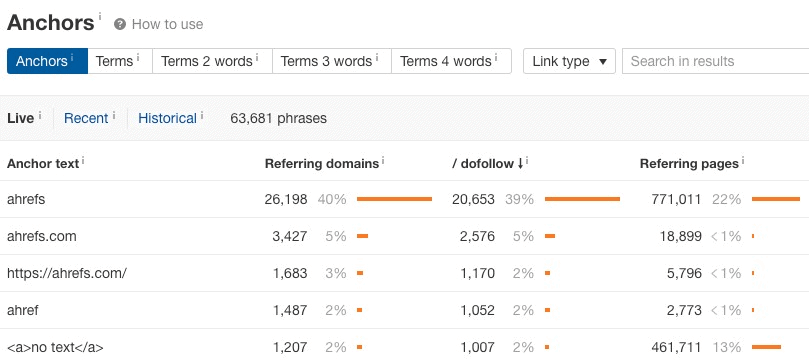

Rankings
Your rankings are the position of your website for a particular keyword in SERPs.
Ideally, you want your website to rank as high as possible for your target keywords. The higher your website ranks, the more organic traffic you will get.
To track your rankings, you can use a tool like Ahrefs Rank Tracker.
To use Ahrefs Rank Tracker, simply enter your domain and target keyword into the search bar and click “Add to tracking.”
You will then be directed to a page that contains your ranking data.
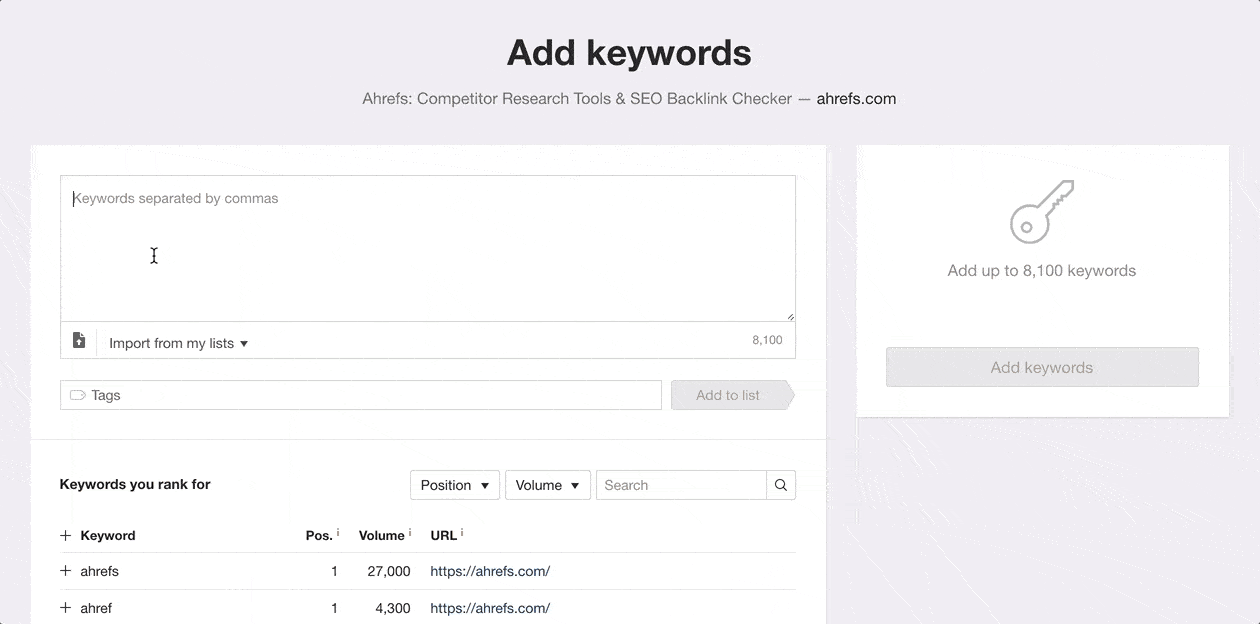

A List of Keywords and Which Pages Target Them
It is a spreadsheet that contains all the keywords that you are targeting, as well as the pages on your website that are targeting those keywords.
This spreadsheet is important because it allows you to track your progress and see which keywords are working and which ones aren’t.
To create this spreadsheet, simply create a new sheet in Google Sheets and add the following columns:
- Keyword
- URL
- Rank
- Change
- Volume
- CPC
You can then fill in the data for each keyword.
5 Tools You Can Use To Track Backlinks
.... Now to Track Your Backlinks!
Now that you know what data you need to track, it’s time to learn how to do it properly. Here are a few methods that you can use:
1. Google Search Console
Google Search Console is a free platform offered by Google that allows you to track your website’s organic traffic and performance in SERPs. It also contains other features such as the ability to submit your sitemap and check for 404 errors.
To use Google Search Console to track your backlinks, simply go to “Links” under “Search Traffic” on the left sidebar.
You will then be directed to a page that contains all the links that Google has found pointing to your website.
2. Ahrefs Site Explorer
Ahrefs is one of the most popular SEO tools available on the market. It contains a lot of features such as keyword research, site audits, and backlink analysis.
To use Ahrefs Site Explorer to track your backlinks, simply enter your domain into the search bar and click “Explore.”
You will then be directed to a page that contains all the backlinks pointing to your website.
3. Majestic
Majestic is another popular SEO tool that offers similar features to Ahrefs. It also has a feature called “Site Explorer” which allows you to track your backlinks.
To use Majestic to track your backlinks, simply enter your domain into the search bar and click “Search.”
You will then be directed to a page that contains all the backlinks pointing to your website.
![]()
![]()
4. Moz Link Explorer
Moz is another popular SEO tool that offers a feature called “Link Explorer” which allows you to track your backlinks.
To use Moz Link Explorer to track your backlinks, simply enter your domain into the search bar and click “Search.”
You will then be directed to a page that contains all the backlinks pointing to your website.
![]()
![]()
5. Monitor Backlinks
Monitor Backlinks is a tool that allows you to track your backlinks, as well as the backlinks of your competitors. It also offers other features such as link building and keyword research.
To use Monitor Backlinks to track your backlinks, simply sign up for a free account and add your website.
You will then be directed to your dashboard, where you can see all the backlinks pointing to your website.
![]()
![]()
These are just a few of the many tools that you can use to track your backlinks. Choose the one that you feel is best for you and start tracking your progress today!
The Benefits of Tracking Your Backlinks
There are manybenefits to tracking your backlinks, such as:
- You can see which links are working and which ones are not effective - which ones are healthy links, and which ones are toxic.
- You can track your progress over time and see how your backlink profile is changing.
- You can find new opportunities for link building.
- You can see which links are most valuable to your website and focus on acquiring more of them.
- You can avoid being penalized by Google for having low-quality backlinks.
By tracking your backlinks, you can make sure that your link-building efforts are paying off.
Frequently Asked Questions
Can you track backlinks in Google Analytics?
In Google Analytics, backlinks are referred to as “referrals.” To view your referral traffic, simply go to “Acquisition” -> “All Traffic” -> “Referrals.”
You can then check your backlinks using the referral report.
Why are backlinks important for SEO?
Backlinks are important for SEO because they help search engines determine the quality of a website. Websites with high-quality backlinks are more likely to rank higher in SERPs.
In fact, a majority of SEOs (58%) believe that backlinks have a profound effect on search engine rankings. Even more, over half of SEO experts believe that the number and quality of links pointing to a website affect its search engine rankings!
If you're not tracking your backlinks, you're missing out on valuable insights about your website's SEO. Not to mention, you could be risking a Google penalty for having low-quality backlinks.
Tracking your backlinks is an essential part of any good SEO strategy. When done right, it can help you improve your website's ranking, build more high-quality links, and avoid being penalized by Google.
Over to you - what are some ways you track your backlinks? Let us know in the comments!
How to Check If You Have Google Penalty - A Beginners Guide
Have you noticed a sudden drop in your website's Google search ranking? Are you getting less traffic from Google organic searches? If so, it's possible that a Google penalty has hit you. In this article, we'll explain what a Google penalty is, how to check if you have one, and what you can do to recover from it.
What is a Google Penalty?
A Google penalty is an action that Google takes against a website violating their Webmaster Guidelines. This can result in a drop in the website's search ranking and organic traffic from Google.
Technically, a Google penalty for your website means that Google has applied a manual action to your site. Manual actions are usually taken when Google's algorithms have detected serious violations of their Webmaster Guidelines, such as black-hat SEO tactics, spammy content, or link schemes.
If you get a manual action against your website, you will receive a message in Google Search Console (formerly known as Google Webmaster Tools). This message will explain the issue and how you can fix it.
What are the Types of Google Penalties?
There are two types of penalties: manual and algorithmic.
Manual penalties are imposed by Google employees when they manually review a website and determine that it is violating their guidelines. Manual penalties are usually the result of black hat SEO practices, such as keyword stuffing or link buying.
Algorithmic penalties, on the other hand, are imposed automatically by Google's algorithms when they detect that a website is violating their guidelines. These penalties can be the result of both black-hat and white-hat SEO practices. For example, a website may be penalized for using too many keywords on a page (keyword stuffing) or for having low-quality content (thin content).
What are some Google Penalty Triggers?
You need to make sure that your site does not engage in any activities that can trigger a penalty, such as:
Keyword stuffing: cramming too many keywords into your content in an attempt to manipulate your website's search ranking. This is considered a black-hat SEO tactic and can be a manual penalty.
Link buying: paying for links in order to manipulate your website's search ranking. This is also considered a black-hat SEO tactic and can result in a manual penalty.
Link schemes: participating in link schemes in order to manipulate your website's search ranking. This can include things like buying links, selling links, or exchanging links solely for the purpose of artificially boosting your search ranking. Link schemes are against Google's Webmaster Guidelines and can result in a manual penalty.
Thin content: having pages on your website with little or no useful content. This can be the result of keyword stuffing ( cramming too many keywords into your content) or simply not having enough helpful and informative content on your site. Thin content is considered low-quality by Google and can result in an algorithmic penalty.
Cloaking: presenting different content or URLs to human users and search engines. This is considered a black-hat SEO tactic and can result in a manual penalty. This applies to texts, images, videos or any other type of web content.
Deceptive redirects: redirecting users to a different page than the one they clicked on. This is considered a black-hat SEO tactic and can result in a manual penalty.
Duplicate content: having the same or similar content on your website as another website. This can result from plagiarism or simply not having enough original content on your site. Google considers Duplicate content low-quality and can result in an algorithmic penalty.
How to Check if You Have a Google Penalty
The first step is to check whether you have received any manual action messages in Google Search Console. To do this, go to Search Console and click "Security & Manual Actions" in the left-hand sidebar.
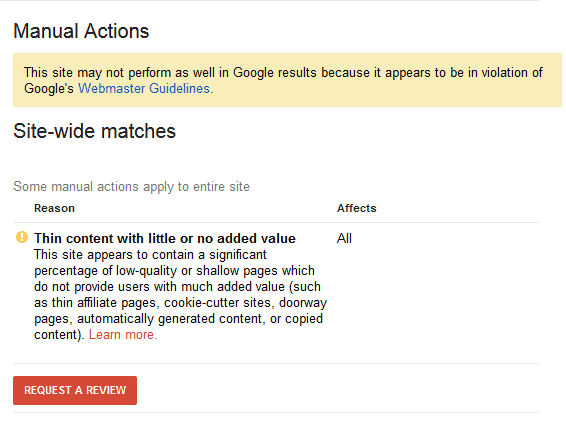

If you see any messages here, it means that Google has taken manual action against your website. Click on the message to learn more about the problem and how to fix it.
Different manual actions imposed by Google:
Site-wide matches:
Site-wide matches are manual actions that apply to an entire website. The entire website is affected by the penalty, not just individual pages or sections.
Partial matches:
Partial matches are manual actions that only affect some of the pages on a website. This means that the penalty affects only certain pages or sections, not the entire website.
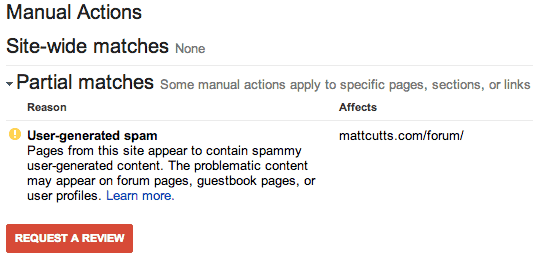

Examples of manual actions:
Thin content with little or no added value:
This manual action is imposed on websites that have pages with little or no useful content. This can result from keyword stuffing ( cramming too many keywords into your content) or simply not having enough helpful and informative content on your site.
Links to bad neighborhoods:
This manual action is imposed on websites that have links to websites that engage in spammy or illegal behavior. This can include things like buying links, selling links, or exchanging links solely for the purpose of artificially boosting your search ranking. Linking to these kinds of websites can hurt your website's reputation and can result in a manual penalty.
User-generated spam:
This manual action is imposed on websites that have user-generated content (such as comments, forum posts, etc.) that is spammy or abusive. This can result in a manual penalty.
Coaking and/or sneaky redirects:
This manual action is imposed on websites that use cloaking (presenting different content or URLs to human users and search engines) or sneaky redirects (redirecting users to a different page than the one they clicked on). This is considered a black-hat SEO tactic and can result in a manual penalty.
Hacked site:
This manual action is imposed on websites that have been hacked. This can result in a manual penalty.
Pure spam:
This manual action is imposed on websites that are nothing but spam. This can include things like keyword stuffing, cloaking, and redirects. This is considered a black-hat SEO tactic and can result in a manual penalty.
If you don't see any messages about manual action, it doesn't necessarily mean that you don't have a penalty. Google also imposes algorithmic penalties that are not announced in Search Console. These are typically the result of low-quality content, excessive spammy behavior, or black-hat SEO tactics.
To check for algorithmic penalties, the first step is to check your website's traffic in Google Analytics. If you see a sudden and significant drop in traffic, it could be the result of an algorithmic penalty.
Even if you don't see any messages about manual actions, it's possible that your website has been hit by a Google penalty. For example, if your website's search ranking has dropped suddenly and significantly, it's possible that you've been hit by an algorithmic penalty
7 Google Penalty Checker Tools to Help You Recover Your Website
SemRush Sensor
Using SemRush Sensor allows you to see recent Google algorithm changes that could be the reason for a drop in traffic.
Since it has the biggest search database, it's one of the most accurate Google penalty checker tools available.
You need to check on the Volatility score, which is the percentage of queries that were affected by a Google update.
If the volatility score is high, then it's likely that your website was affected by a recent algorithm change.
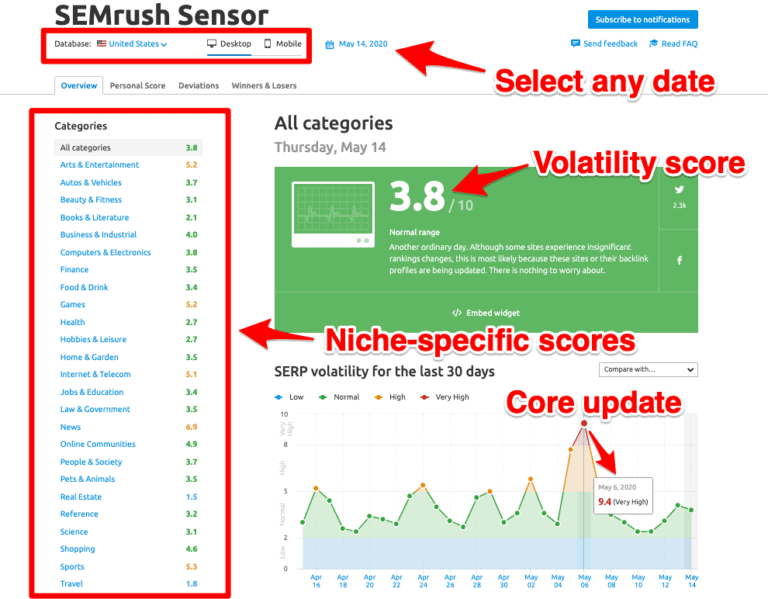

MozCast
MozCast is a weather report for the Google algorithm.
It tracks major Google algorithm changes in real-time and sends out alerts whenever there's a significant change.
This is a valuable tool for keeping track of algorithm updates that could potentially impact your website.
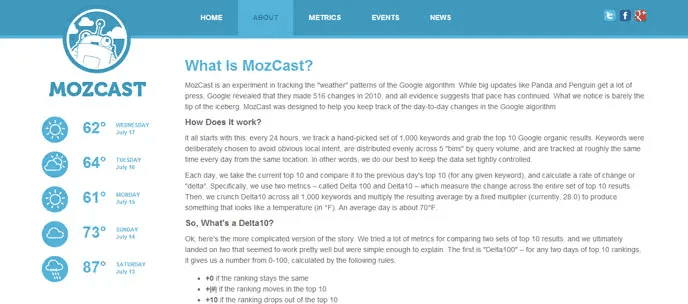
Accuranker Grump Meter
The Accuranker Grump Meter is a tool that measures changes in the Google algorithm.
It gives you a grump score based on how volatile the algorithm is.
A score of 0 means that there are no major changes, while a score of 10 means that there are significant changes. 12-15 means that there's an algorithm update in progress and is unusual.
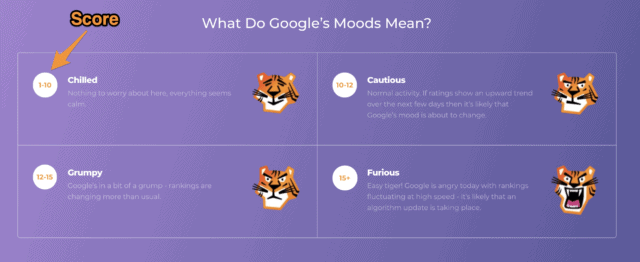

Panguin Tool
Panguin Tool is a Google penalty checker tool that shows you how your traffic has changed in relation to specific Google algorithm updates.
This is a valuable tool for pinpointing which algorithm changes have impacted your website the most.
To use the tool, you need to connect your Google Analytics account.
Once you've done that, you can see a list of algorithm updates and how they've impacted your traffic.
You can also see which keywords have been affected by each update.
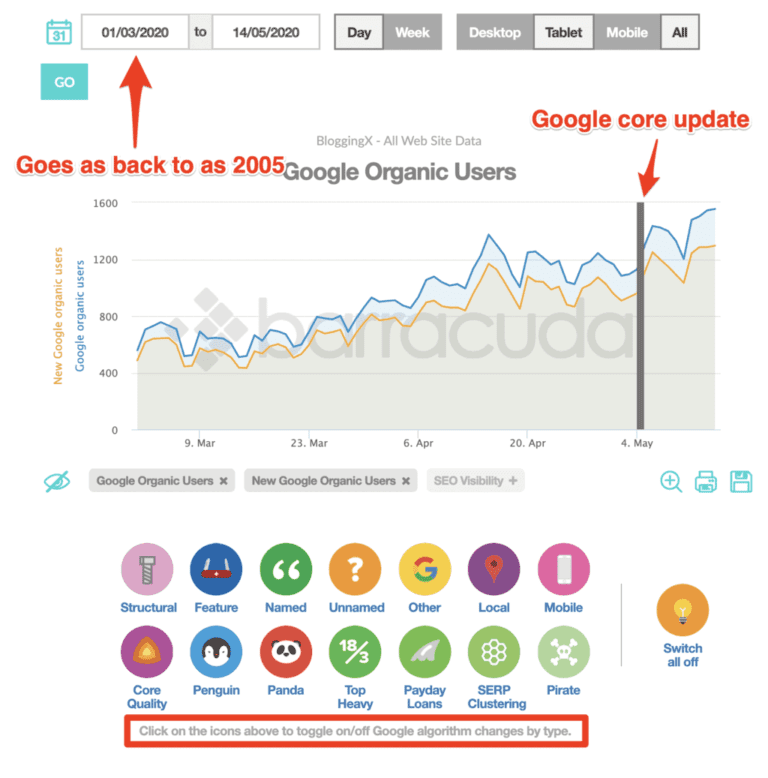

Fruition
Fruition is a Google penalty checker tool that allows you to see how your traffic has changed in relation to specific Google algorithm updates.
This is a valuable tool for pinpointing which algorithm changes have impacted your website the most.
It's a freemium tool that'll ask you to connect your Google Analytics account. Once you've done that, you can see a list of algorithm updates and how they've impacted your traffic.
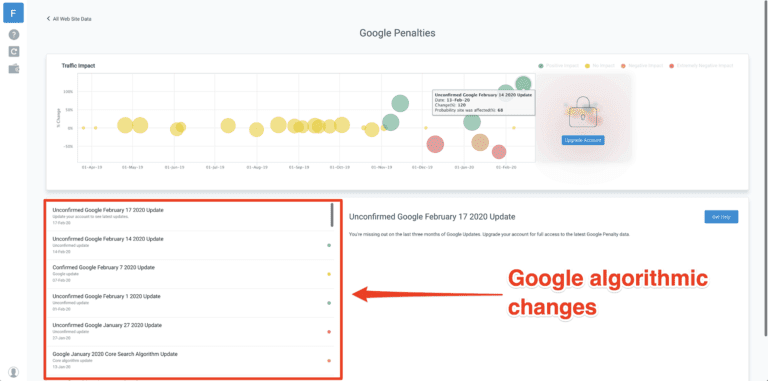

Website Penalty Indicator by FEinternational
The Website Penalty Indicator by FEinternational is a tool that allows you to check if your website has been hit by a Google penalty.
To use the tool, you need to enter your website's URL and choose the type of penalty you want to check for.
The tool will then scan your website and give you a report on whether or not a penalty has hit you.


Rank Ranger
Rank Ranger is a tool that allows you to track your website's rankings in Google.
It also has a feature that allows you to check for Google penalties.
You'll get graphs showing the last 30-day rank fluctuations of both the desktop and mobile indexes.
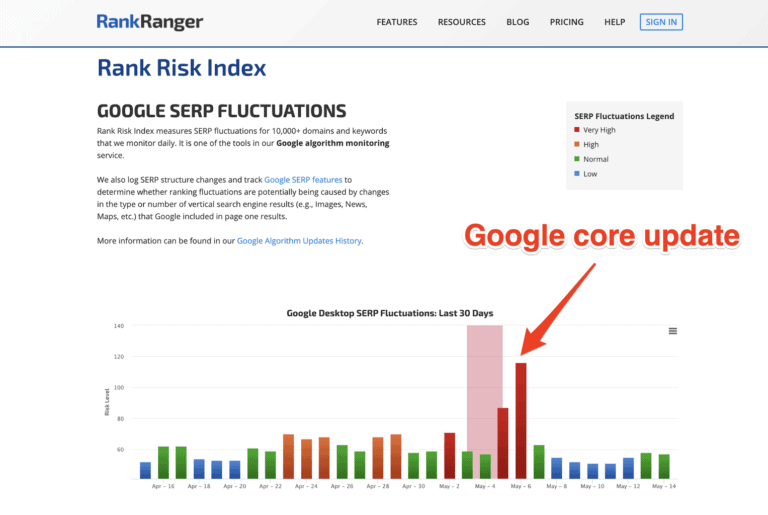

Key Takeaways
At the end of the day, it's always better to feel safe than sorry. If you think you might have received a Google penalty, your best bet is to check.
There are many different tools that you can use to check for penalties, and they all have their own unique features.
Finding one that works for you and that you're comfortable using is important. With the right tool, you'll be able to quickly and easily check for penalties, so you can get back to business as usual.
For that reason, the best bet is always to do quality SEO right from the start. That way, you avoid any type of manual or algorithmic penalties from Google. If you focus on delivering quality content that satisfies searcher intent, you’ll be on the right track.
Frequently Asked Questions
Why does organic traffic decrease?
There are many reasons why organic traffic can decrease.
Some of the most common reasons include:
- Google algorithm updates
- Changes in search engine ranking algorithms
- Loss of backlinks
- Website design changes that negatively impact usability
- Poor content quality
- Negative SEO attacks
If you're noticing a decrease in organic traffic, it's important to check for any of these potential causes.
How can you identify a manual penalty?
If you think you've received a manual penalty, the first thing you should do is check your Google Search Console account. If you see a message from Google that says your site has been manually penalized, it will usually tell you what the problem is.
Does Google penalize spam links?
Yes, Google can penalize your website for having spammy links. If you have a lot of low-quality links pointing to your website, it can hurt your ranking on Google.
To avoid this, you should only build links from high-quality websites. You should also use link disavowal if spammy links are pointing to your website.
How long does a Google penalty last?
A Google penalty can last anywhere from a few days to a few months. If you've been hit by a manual penalty, it will usually take longer for the penalty to be lifted.
Google Shopping: 11 Great Ways to Improve ROI
A cornerstone of success for many companies, brands, and individual marketers alike, Google Shopping, has the potential to generate massive sales. However, to find success on this extremely competitive platform is no mean task. It can be a very daunting challenge to ensure that your shopping and paid ads cut through the noise of Google.
You need to get creative with your campaigns and do something beyond keeping up with conventional approaches to really have a successful shopping campaign. Did you know that 60% of all Google search ad clicks in the third quarter of 2020 came from Google Shopping ads? If you have not been using Google Shopping ads, it is time that you do and takes advantage of the massive growth opportunities it can present to your brand.
In this article, we will explain eleven important steps to set up your Google Shopping campaigns that will help you get a complete bird’s eye view of the entire process.
What are Google Shopping Campaigns?
Google Shopping campaigns are a type of campaign on Google Ads (formerly known as Google Adwords) that allow you to promote your products by giving users detailed information about what you're selling before they even click your ad. A Google Shopping campaign also allows you to show ads displaying your product images and pricing, current discounts or promos, and so on.
According to a Google Ads statistics report prepared by PowerTraffick in 2019, when it comes to Google Ads that get clicked, 65% have buyer-intent keywords such as ‘buy,’ ‘shop,’ ‘purchase,’ and so on.
The core function of this platform is to deliver keyword-oriented results, i.e., when a user enters a relevant keyword related to a specific product, then Google will show all the products that are relevant to the search query on its search engine result page (SERP). In a nutshell, users can buy products based on the keywords that they are most likely to inquire about.
The Importance of Google Shopping Campaigns
Here are some advantages of using Google Shopping ads for your business.
- Google Shopping Ads provide a great opportunity for businesses of every size to maximize their product exposure to web surfers across the globe, even with a minimal budget.
- One of the best ways to achieve active conversions, Google Shopping ads are instrumental in marketing a product in different verticals by showing search results with relevant images.
- Google Shopping ads are not the same as pop-up ads showing irrelevant results. Google Shopping ads allow users to find relevant results over search.
- Since Google Shopping ads convey a lot of information to the searcher before they visit your site, the clicks tend to be from visitors with stronger buyer intent. The visitors already know what your product looks like and how much it costs, and they might be ready to add it to their cart and pull the trigger immediately.
11 Best Ways to Improve ROI in Google Shopping
Here are some tips to improve your Google Shopping performance that will allow you to enjoy the full positive impact of Google’s online shopping platform.
Fine-Tune Your Product Titles
- It is important to understand that Google's algorithm will use your titles to decide which search queries your listings will be applied to. So, if you are missing certain important keywords that your target audience is searching for, you will not be listed in their search and will miss out on a purchase.
- The product titles are the first description that searchers see, so you need to make them impactful and keyword and information-rich. If your titles outline product attributes in a clear and concise way, your shoppers can immediately find out if your listing is worth clicking on.
- You must ensure that your product titles are based on your industry type. It can be termed a good practice if you could follow a format that showcases “Brand, product + significant keywords, type of product and size.”
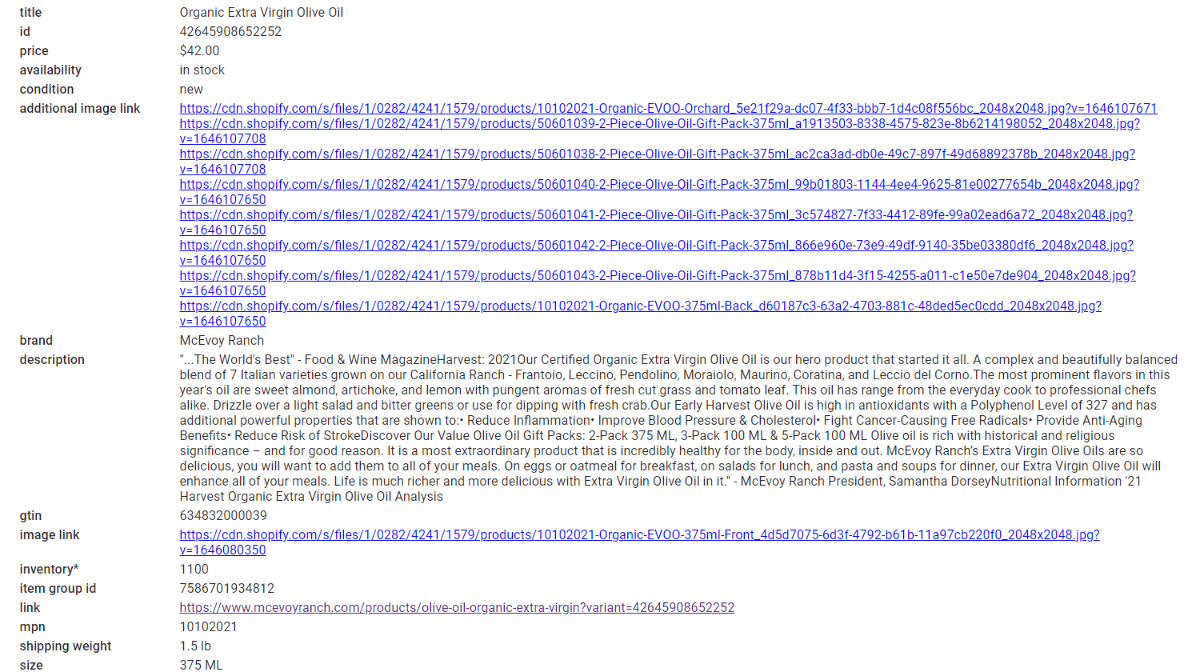

- When you are involved with products in different industries, it’s advisable that you experiment with different product title formats of other competitions.
Use High-Quality Images to Make Your Campaign Visually Appealing
- As a campaign manager, you must realize that Google Shopping is a visual-driven format. Therefore, ads with low-quality images are not going to be effective.
- If the images used in your Google Shopping Ads are of good quality, it can improve your ROI since visually interesting product images can influence sales.
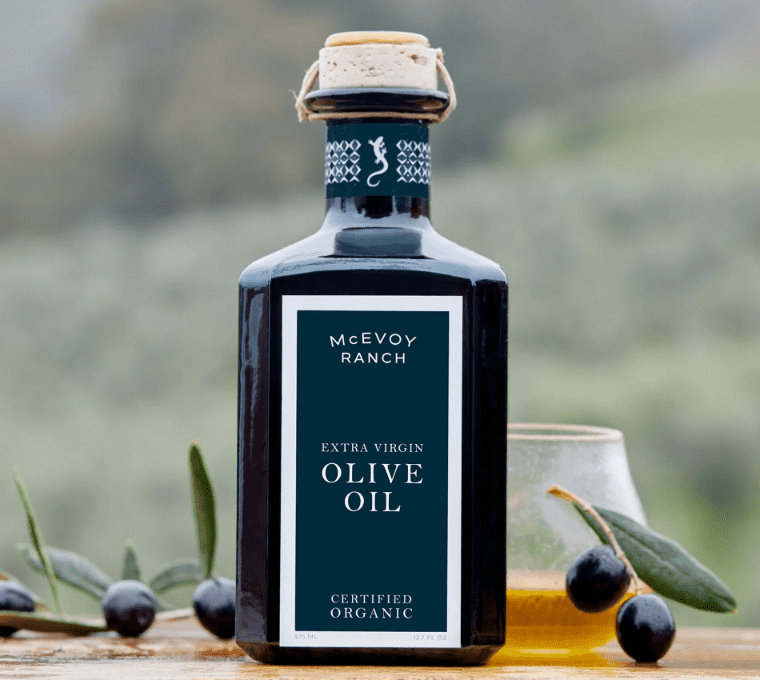

- An effective product image is one that tends to be simple and clear. Usually, white or light-colored backgrounds with just the product displayed are considered an ideal option.
- While adding product images to your campaign, you must review Google’s rules and ensure that the images meet the minimum image requirements.
Optimize Your Product Feed Descriptions
- The product descriptions must be information-rich, well-structured, and contain keywords for SEO.
- Similar to the product titles, your product descriptions can also significantly impact your sales.
- Users are provided with a 5,000-character limit for Google Shopping ads descriptions. However, in most cases, this is much too long, as customers will not read such lengthy descriptions, and trying to get close to the limit may end up looking bloated and messy. Most customers are expected to read around 1,000 characters at maximum.
- Optimize the product descriptions to include well-researched and targeted keywords, as this can help the ads rank better in search queries.
Tweak Your Product Categories Manually
- One of the main reasons why campaign managers often ignore this area is that Google product categories are semi-optional.
- You are free not to choose a category for your product; however, this comes with other problems. If you try to sell your products without defining them, then Google will automatically categorize your product. This is less than ideal, as Google could confuse the product categories when operating automatically, thereby making ads less effective and relevant.
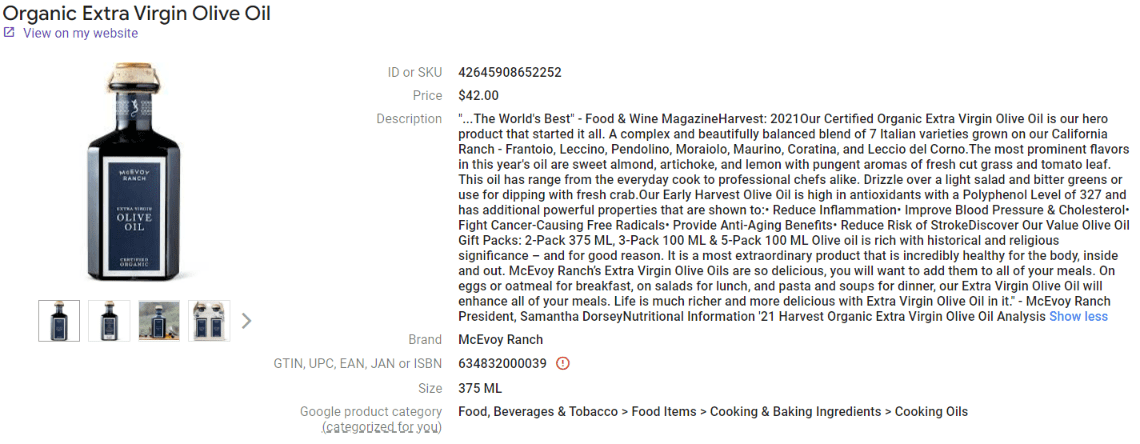

- It is always advisable to tweak your product categories manually as it will allow you to analyze the trends around different products of your store and will ultimately help you understand which products are performing better across different segments.
Include Negative Keywords to Remove Your Ads from Irrelevant Searches
- When you add negative keywords to your Google Shopping campaign, it helps Google understand the specific keywords that should not be triggering your ads and will help to ensure that your ads are not shown in an irrelevant search.
- Let’s look at an example. If you are trying to sell tennis canvas shoes but searches for other types of sports shoes (soccer boots, running shoes, and so on) are showing your product, then this could create a lot of confusion for visitors. Negative keywords can prevent your ads from being displayed for unrelated searches. This will ensure that your products are limited to an audience who wants to see them, thereby preventing wasted ad spending.
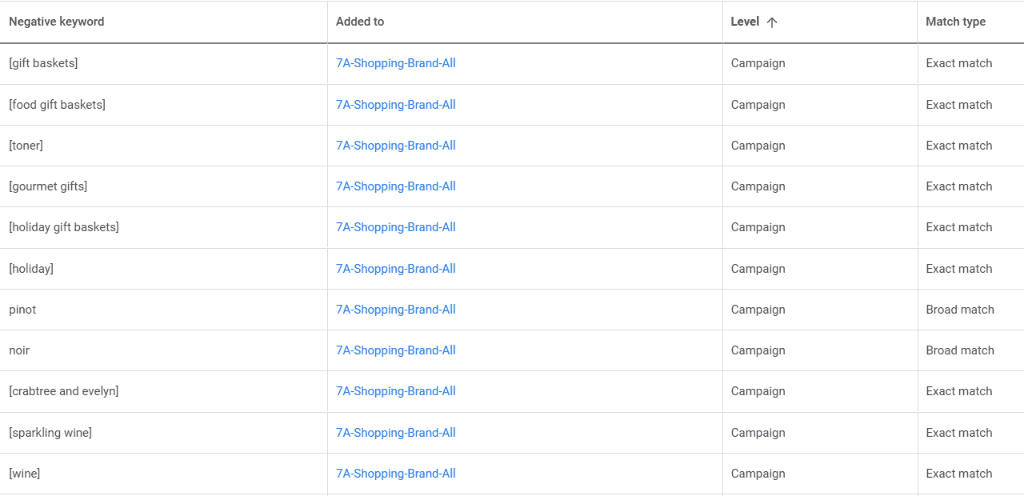

- When you have your negative keywords placed correctly, Google gets a clear idea of the keywords you don’t want to display ads for.
Boost and Lower Bids Based on Product Performance
- You may be bidding on your Google product campaign as a whole or in groups; however, you may notice that only certain products perform well. You need to increase exposure by boosting bids on such individual products.
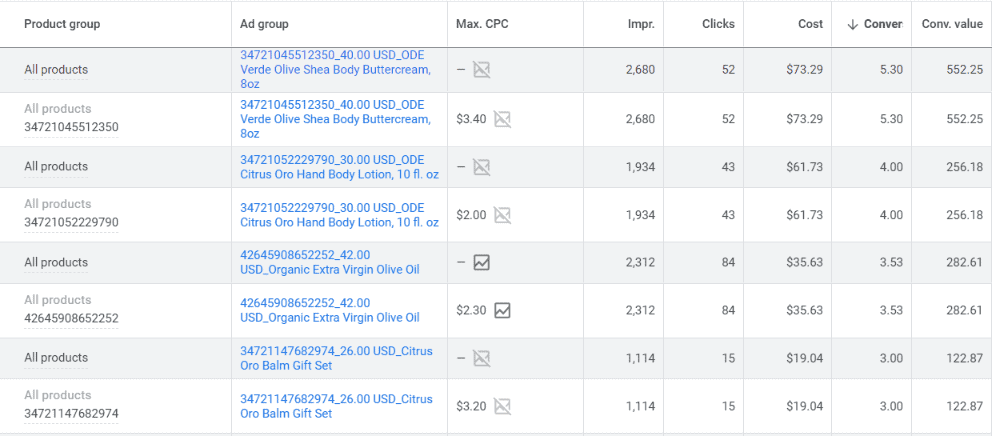

- It is important to lower your budget on product ads to avoid spending on a product that isn’t performing well. Building Single Product Ad Groups is an effective way of isolating better-selling products.
Use Priority Bidding Structure
- If your product has different models, you will definitely have to capture those users searching for a specific model. For example, there would be some users who may search “Adidas football”. Then, there are some users who search “Adidas Starlancer Plus Ball”. And finally, some would search “Adidas Starlancer Plus Ball Size 5”. While it is important to capture all these users, it is very important to capture the second and third users, as they are most likely to convert.
- The volume and quality of traffic for the terms mentioned above will differ. Therefore, you need to keep your bids low for those high-traffic generic product searches, so you’re not capturing too many low-converting clicks. And you will have to keep your bids high for those specific terms with higher purchase intent. The priority bidding structure ensures that you only have a high spend on clicks that bring in a high return.
Adjust Bids Based on the Device Performance
- The performance of a product may vary across different devices. A product that performs well over smartphones may not perform the same way over desktops and vice versa.


- As a campaign manager, you need to keep in mind that each and every type of device has a significant role to play in your campaign, and if you can segregate your ads’ performance into different categories based on different devices, you will be able to focus your campaigns on platforms that have a higher penetration of users, thereby improving your overall ROI.
Set Up Target ROAS for a Higher Conversion Volume
- Target ROAS (Return On Ad Spend) is a common shopping bidding strategy and a marketing metric that considers the value of a purchase rather than just the path to the purchase itself. It is the average conversion value or the revenue that you would like to get for each dollar you spend on ads.
- A high conversion rate does not imply a high ACPA (Average Cost Per Action). This happens when you cannot achieve a healthy return despite a higher number of purchases. Wondering how is this possible? What if all those purchases are below $5?
- You need to set a target ROAS in a healthy spot above where your current ROAS lies, just like setting a max click bid cap.
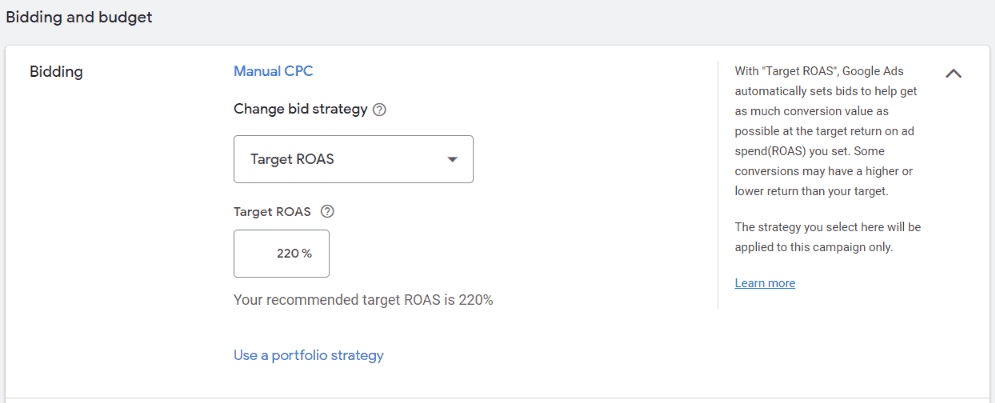

- Target ROAS offers good insight into what leads to conversions and the amount of revenue your conversion actions are generating.
Understand Your Competitive Landscape and Take Action to Improve Your Visibility
The Competitive Visibility report helps compare your visibility across Shopping ads and free listings based on displayed impressions on product-category level performance.
There are three key metrics that you can use to understand where you and your competitors rank.
- Relative visibility shows how often your competitors’ offers are shown compared to your offers.
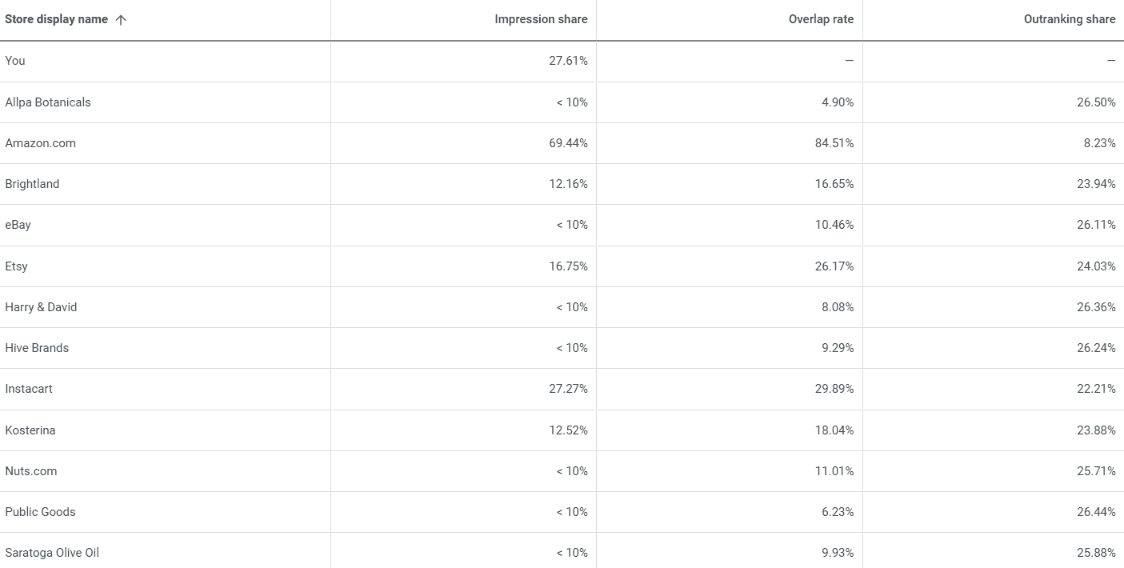

- Page overlap rate explains how frequently competing retailers’ offers are shown together with your offers on the same page.
- Higher position rate shows how often a competitor’s offer was placed in a higher position on the page than your offer.
Utilize Customer Reviews and Ratings to Build the Credibility of Your Business
- It is a common psychological fact that online shoppers check customer reviews and ratings for a particular product before pulling the trigger. The buyers will not feel confident enough to buy your products if the products do not have any reviews or ratings.
- Customer ratings and reviews will help your business collect valuable insights to identify what works well and what could be improved.
- Customer reviews will not just reduce skepticism but also boost customer confidence, which ultimately helps to increase your conversion rate.
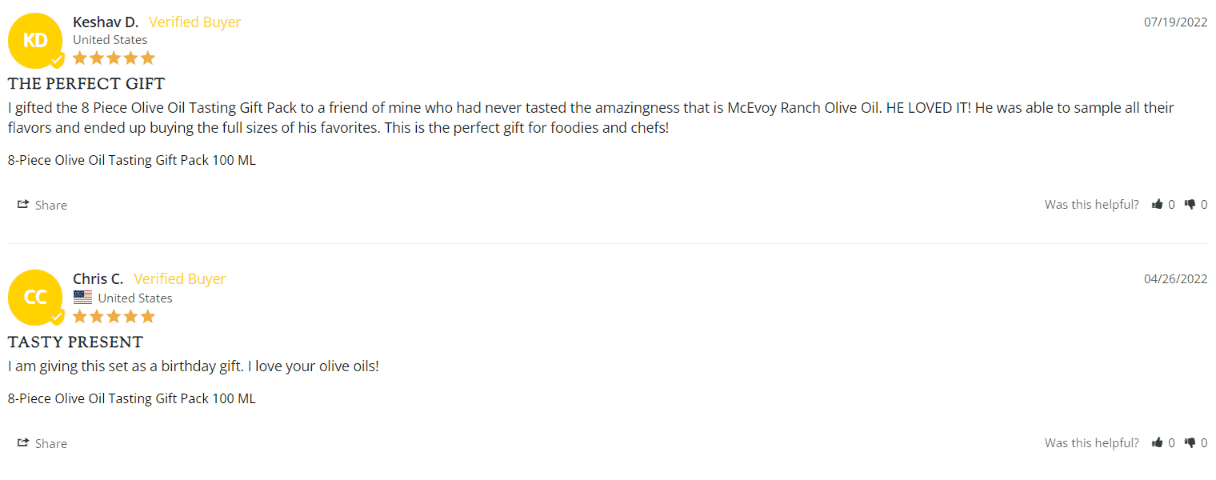

- Building credibility and trust at every stage is important as it keeps your visitors informed and satisfied. This will also help your business grow as you’re more likely to see them return, spend more, and recommend your business to others.
- Reviews and ratings also act as social proof for your products, as people feel it easy to trust products from a seller who already has lots of reviews and end up buying the products. Ratings and reviews are one of the deciding factors for many shoppers.
Final Thoughts
Google Shopping Ads can be an incredibly effective tool to increase sales and exposure for your business, and it has proven to be highly beneficial for many online e-commerce website owners.
It is true that every business is not the same, and not every shopping campaign is going to bring you the desired result. However, if you follow the basic best practices described above, you can be well on your way to success.
If you use these simple and effective steps to create your shopping ads, you will definitely witness a notable surge in ROI. Your next Google Shopping campaign will be more cost-effective, and all your initial investment, time, and hard work will pay off in the long run.
Author Bio
Andy Beohar is VP of SevenAtoms, a Google and HubSpot certified agency in San Francisco. Andy develops and manages ROI-positive inbound and paid marketing campaigns for B2B & Tech companies. Connect with Andy on LinkedIn or Twitter.
7 Benefits of Using Local Social Media [+10 Ways to Use It Properly]
With almost 4 billion social media users across all platforms, it's no wonder that businesses are jumping on the bandwagon to connect with their target audiences. Users spent about 95 minutes per day on social media in 2022 - which is higher than ever.
Local businesses, in particular, can benefit greatly from utilizing social media platforms. For example, 2/3 of Facebook users say they are more likely to buy from a small or medium-sized local business they can connect with on the site and visit a local business page at least once weekly.
This only means that if you're not utilizing social media for your local business yet, you're missing out on a lot of potential customers.
What is Local Social Media?
Local social media refers to using social media platforms to connect with potential and current customers who live close to your business.
This could include anything from creating a Facebook page for your business and sharing content that is relevant to your local audience to using Twitter to connect with other businesses and individuals in your area.
Here's a list of social media channels you can use for your local social media marketing efforts:
- Snapchat
- Tiktok
There are a number of different ways that you can use local social media to benefit your business, which we will touch on later. But first, let's take a look at some of the benefits of using social media for your local business.
If you're not sure how your business can take advantage of social media, check out these seven benefits of using local social media.
What are the Benefits Of Using Social Media?
1. Reach a Wider Local Audience
The first and most obvious benefit of using social media for your local business is that it allows you to reach a wider local audience.
With over 2 billion active monthly users, Facebook alone gives you access to a larger audience than any other platform. And with 64% of American adults using social media, chances are good that your target customers are already on one or more platforms.
In order to capture these local social media audiences, brands usually invest in Facebook advertising. According to a report, 80% of small businesses use Facebook Advertising to reach their target audiences.
2. Increase Brand Awareness and Recognition
Another benefit of using social media for your local business is that it can help increase brand awareness and recognition.
When customers see your business pop up in their social media feeds, they'll start to become more familiar with your brand. And the more they see your brand, the more likely they are to remember it and consider it when they need your products or services.
3. Improve SEO Rankings
Social media can also help improve your website's SEO rankings.
Google considers social signals when determining where to rank websites in search results. So the more active you are on social media, the higher your website is likely to rank.
It'll be easier for Google to index your website if you have social media profiles because your website will be linked to those profiles.
4. Generate Leads and Sales
One of the main goals of any business is to generate leads and sales, and social media can help with that.
Since social media platforms are a great way to increase brand awareness and connect with potential customers, they can also be used to generate leads and sales.
In fact, social media has been shown to be one of the most effective channels for generating leads and sales. A study by HubSpot found that social media generates more leads than any other marketing channel, and another study found that social media is the second-most effective channel for generating sales.
5. Build Better Relationships with Customers
Social media is also a great way to build better relationships with your customers.
When you interact with customers on social media, you have the opportunity to show them that you're more than just a business - you're also a real person who cares about their needs and concerns.
You can use social media to address customer concerns, offer helpful advice, and build relationships that will make them more likely to do business with you in the future.
6. Get Better Customer Insights
Social media can also be used to get better insights into your customers.
You can use social media listening tools to track what people say about your brand, industry, and competitors. You can also use social media to conduct customer surveys and gather feedback about your products or services.
This information can be used to improve your marketing strategies and make better decisions about how to serve your customers.
7. Stay Ahead of the Competition
Finally, social media can help you stay ahead of the competition.
By monitoring what your competitors are doing on social media, you can stay up-to-date on their latest marketing campaigns and strategies. You can also use social media to learn about new products or services they're offering.
This information will give you a competitive advantage and help you make sure that your business is always one step ahead.
10 Ways to Use Local Social Media
If your goal for this year is to improve your local social media, here are 10 ways you can utilize social media platforms to reach your audiences locally:
1) Use social media advertising to target local customers.
Running social media ads is one of the most common practices big brands use in order to reach more local audience members. By targeting your ads specifically to people in your city or town, you can ensure that only locals see them. This is what makes Social media ads effective - it allows you to be very specific with your audience targeting.
For example, on Facebook, the platform allows you to set your target location by city, state, or country. You can also set the distance radius from your business location that you want your ad to reach - between 10 and 50 miles around a point you set.
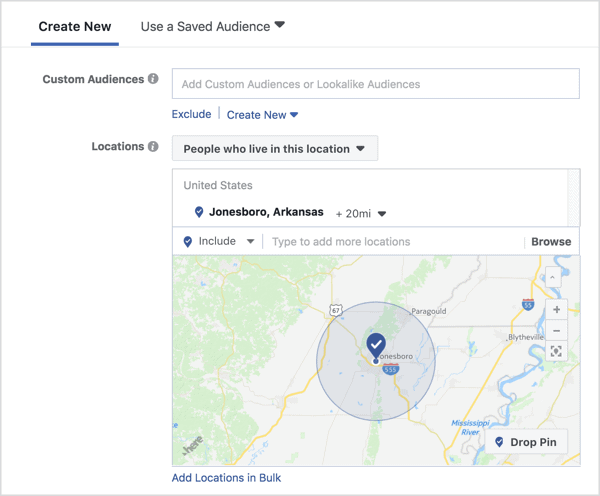

The same goes with Instagram - by using different types of Instagram ads, you can target people based on their location and other factors such as interests, age, gender, and even behavior.
2) Use geo-tagging to make your posts more discoverable to local audiences.
Geo-tagging is the process of adding your location to your social media posts. This can be done by tagging your location on the post itself or by adding your location to your profile so that all of your posts are automatically geo-tagged.
Geo-tagging makes your posts more discoverable to people who are searching for content in a specific location. For example, if someone is searching for "restaurants in New York," and your post is geo-tagged as being in New York, it's more likely to show up in the search results.
This is a great way to reach more local people who are interested in what you have to say. It's also a good way to connect with other local businesses and influencers.
3) Use social media to improve your website's SEO rankings.
Optimizing your social media channels for local SEO is a great way to improve your website's search engine rankings. This means ensuring that your social media profiles are completed and up-to-date and using relevant local SEO keywords in your posts.
It also means claiming your business listing on directories like Google My Business, Yelp, and Bing Places. These listings help improve your visibility in local search results and give you another avenue to connect with potential customers.
4) Use social media to drive traffic to your website.
One of the best ways to use social media for business is to drive traffic back to your website. This can be done by including links to your website in your posts and bio and using effective calls to action.
Calls-to-actions are a great way to encourage people to visit your website. They can be used to promote a specific product or service or simply get people to explore your site further.
It's one of the most underrated content marketing tactics, but it's very effective.
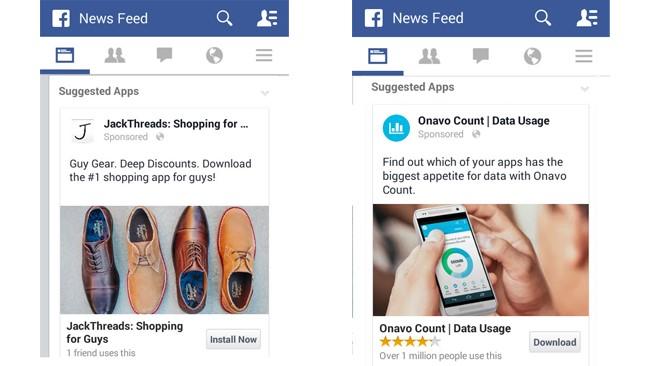

5) Use social media to create local partnerships.
Partnering with other local businesses is a great way to reach new audiences and promote your business. These partnerships can take many forms, but they typically involve some type of cross-promotion.
For example, you might agree to feature another business on your social media channels or to include a coupon for their product or service in your next newsletter. In exchange, they agree to do the same for you.
This is a great way to reach new people without spending any money on advertising. It's also a great way to build relationships with other local businesses.
6) Use local social media to retarget your existing customers
The good thing with local social media is that it does not only allow you to reach new audiences but also allows you to retarget your existing customers through remarketing.
This can be done by running ads that target people who have visited your website or interacted with your brand in some way. This is a great way to improve customer retention rates and increase sales and leads.
Retargeting can be done on all of the major social media platforms, and it's a very effective way to reach your target audience.
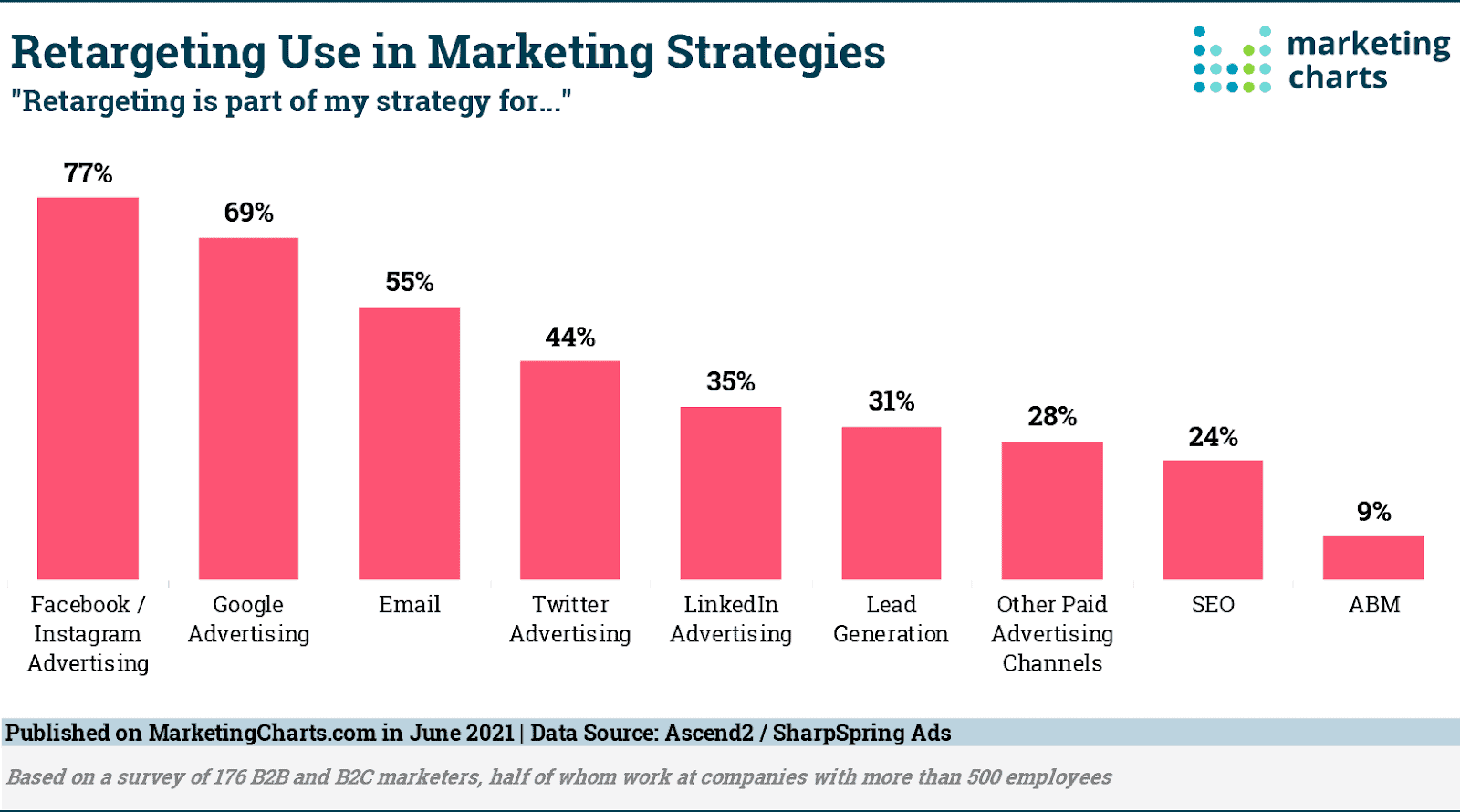

7) Use social media to host local events.
Another great way to use social media for business is to host local events. This is a great way to connect with potential customers and build relationships with other local businesses.
Local events can be anything from product launch parties to charity fundraisers. They can be small and intimate, or they can be large and public. But no matter what, they're a great way to connect with your community and promote your business.
You can create social media groups, such as Facebook groups or events to host your local business events for free or with very little money. You can run ads to promote these groups and events to potential attendees.
This is a great way to reach new people and promote your business at the same time.
8) Use social media to generate user-generated content (UGC).
User-generated content is a great way to connect with potential customers and promote your business. This type of content is created by people talking about your brand, which can be very valuable.
UGC can take many forms, but some of the most common are reviews, testimonials, social media posts, and blog comments. This type of content is incredibly valuable because it's coming from real people who have had a positive experience with your business.
This will help you increase your brand mentions across all social channels. By encouraging your customers and followers to create UGC, you can get your brand in front of more people and improve your chances of converting them into customers.
9) Use social media to run local contests and giveaways.
Local contests and giveaways are a great way to connect with potential customers and promote your business. They're also a lot of fun and can be a great way to build relationships with other local businesses.
Contests and giveaways can take many forms, but they typically involve giving away a prize in exchange for some type of interaction. For example, you might give away a free product or service in exchange for people sharing your contest on social media.
This is a great way to increase your brand awareness and reach new people. And, if you partner with other local businesses, you can also build relationships and promote each other's businesses.
10) Use social media to connect with local influencers.
Local influencers are people who have a large following on social media, and they can be a great way to reach new people.
If you can connect with local influencers and get them to promote your business, you can reach a whole new audience. This is a great way to increase your brand awareness and drive more traffic to your website or store.
There are a few different ways to connect with local influencers. You can reach out to them directly or use a tool like BuzzSumo to find influencers in your area.
Once you've found some local influencers, you can reach out to them and see if they're interested in promoting your business. If they are, you can work out a mutually beneficial agreement where they promote your business to their audience in exchange for some type of compensation.
If you want to find local influencers on social media, we'll detail it in the next section.
How to Find Local Social Media Influencers
Influencer marketing in 2022 is no longer a new concept. In fact, it's one of the most effective marketing strategies out there.
But with so many influencers to choose from, it can be tough to know where to start. That's why we've put together a list of tips to help you find the right local social media influencers for your business.
1) Search your own following.
The first place to start is your own social media following. Look through your list of followers and see if there are any influencers in your area.
2) Use a tool like BuzzSumo.
BuzzSumo is a great tool for finding influencers in your industry. Just enter a keyword related to your business, and it'll show you a list of influencers who have written about that topic.
3) Check out local hashtags.
Another great way to find local social media influencers is to search for local hashtags. For example, if you're a business in Los Angeles, you could search for #LAinfluencer or #LAblogger.
This will give you a list of people already talking about your city and likely to be influencers in your area.
4) The basic -- Just Google it.
Finally, you can also use Google to find local social media influencers. Just enter a search like "top social media influencers in Los Angeles" or "Los Angeles fashion bloggers."
This will give you a list of influencers in your area, and you can reach out to them and see if they're interested in working with you.
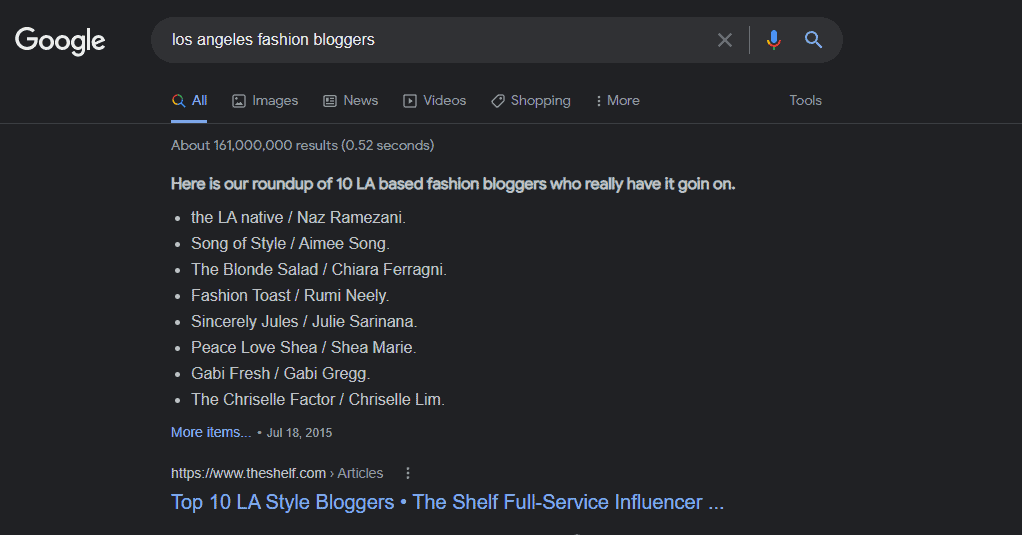

Reaching Out to Local Social Media Influencers
Once you've found some local social media influencers, it's time to reach out to them and see if they're interested in promoting your business.
The best way to do this is to send them a personal message. Just introduce yourself and your business, and explain why you think they would be a good fit for promoting your products or services.
Be sure to include some information about your offer, such as how much you're willing to pay or what type of compensation you're offering. And, if you have any ideas for how they could promote your business, be sure to include those as well.
Once you've sent your message, all you can do is wait for a response. If they're interested in working with you, they'll get back to you, and we can start working out the details.
If you don't hear back, don't be discouraged. Just move on to the next influencer on your list and try again.
Frequently Asked Questions:
How effective is social media for local SEO?
Social media is a great way to improve your local SEO and local link building campaigns. By creating social media profiles for your business and actively engaging with your audience, you can increase your visibility in search engines and drive more traffic to your website or store.
What does social media offer to local businesses?
Social media offers local businesses a number of benefits, including the ability to reach a larger audience, build relationships with customers, and create a more personal brand.
What types of local businesses have a social media marketing budget?
Nearly all local businesses have a social media marketing budget. In fact, small businesses are the most likely to allocate money specifically for social media marketing. The industries, restaurants, retail, and beauty are the most likely to have a social media marketing budget.
Why local retailers' social media is better than national brands?
Local retailers have an advantage over national brands when it comes to social media because they can connect with their customers on a more personal level. Local retailers can also use social media to build relationships with other businesses in their community, which can help them get more exposure and drive more traffic to their stores.
What local businesses spend the most on social media marketing?
The industries that spend the most on social media marketing are restaurants, beauty, and retail.
How do you create brand loyalty on social media for local businesses?
The best way to create brand loyalty on social media for local businesses is to engage with your audience and build relationships with them. By responding to comments and messages, you can show your customers that you care about them and their experience with your business. You can also use social media to offer exclusive deals and promotions to your followers, which will help create a more loyal customer base.
How does budgeting affect the local levels of social media?
Budgeting can have a big impact on the local levels of social media. If you don't allocate enough money for social media marketing, you won't be able to reach as many people or create as much of a connection with your audience. However, if you spend too much on social media marketing, you could end up wasting money that could be better spent elsewhere.
How much do local businesses spend on social media?
Local businesses typically spend between 5-10% of their overall marketing budget on social media. However, this number can vary depending on the size of the business and the industry they're in. Restaurants, for example, tend to spend a larger percentage of their budget on social media than other types of businesses.
Which social media should I use for my local business?
There's no one-size-fits-all answer to this question. The best social media platform for your business will depend on a number of factors, including your industry, target audience, and budget. However, local businesses' most popular social media platforms include Facebook, Twitter, and Instagram.
How to Find a Good SEO Consultant
As your business grows, you will face new challenges that you may not be able to handle on your own. At this point, it is time to look for an SEO consultant who can help you with the necessary optimization for your website.
According to a survey of small business owners,over 65% had dealt with more than one SEO service provider. On average, small businesses spend around $500 per month on their SEO services.
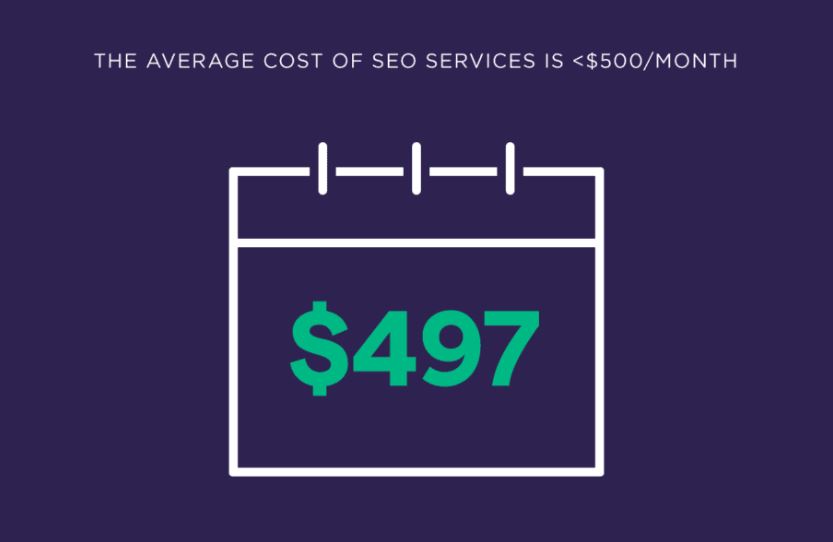

Source: https://backlinko.com/seo-services-statistics
This is not surprising given the ever-changing landscape of SEO. As a result, finding the right consultant can be a difficult and time-consuming task, which leads you to consider the option of hiring an SEO consultant.
What is an SEO consultant?
An SEO consultant (or agency) is a company or individual that provides expert advice and services related to search engine optimization.
The role of an SEO consultant is to help you improve your website’s ranking in search engine results pages (SERPs), with the ultimate goal of driving more traffic to your site.
SEO consultants are either hired by an organization to provide in-house services or work with a number of clients as part of an agency.
In-house SEO consultants are usually involved in all aspects of website optimization, from link building and content creation to keyword research and analysis.
SEO agencies, on the other hand, tend to specialize in one or two areas of SEO and usually outsource the rest.
An SEO Consultant usually has the following skillset in order to perform their duties:
- Competitor analysis
- On-page optimization
- Off-page optimization
- Link building
- Keyword research
- Content creation
- Pay per click
- Updated with the latest SEO algorithm updates
- Good understanding of Google penalties
Most importantly, an experienced SEO consultant should be able to interpret data and use it to improve a website’s ranking. They usually use competitive tools such as Ahrefs, Majestic, and Moz to keep track of a website’s progress.
Types of SEO Consultants:
There are three main types of SEO consultants: generalists, specialists, and freelancers.
1) Generalists are usually agencies that offer a wide range of services, from link building to content creation. They usually have a team of SEO experts who can handle different aspects of optimization.
2) Specialists are individuals or agencies that focus on one specific area of SEO. For example, there are link-building specialists, keyword research specialists, and on-page optimization specialists.
3) Freelancers are self-employed individuals who usually work with a number of clients. They are often generalists who can handle different aspects of SEO.
Why hire an SEO consultant?
There are many reasons why you might want to hire an SEO consultant.
If you’re not happy with your website’s current position in SERPs, an SEO consultant can help you identify the problem and devise a plan to improve your ranking.
If you’re launching a new website, an SEO consultant can help you ensure that your site is properly optimized from the start. And if you’re planning a redesign of your existing website, an SEO consultant can help you avoid common mistakes that could hurt your ranking.
An SEO consultant can help you keep up with the latest trends and changes in the SEO industry. With an experienced consultant on your side, you can be sure that your website is always up-to-date with the latest best practices.
Another common reason is that businesses want to focus on their core competencies and leave the SEO to experts. This allows businesses to stay focused on what they do best and outsource the rest.
You can do SEO yourself, however, it takes a lot of time and effort to do it correctly. In addition, you need to have a good understanding of how SEO works and how to implement it effectively.
If you don’t have the time or expertise to do SEO yourself, then hiring an SEO consultant is a good option.
On top of these reasons, ROI-wise, having an effective SEO generates more revenue than all other marketing channels combined, averaging 44% of all revenue across all industries.
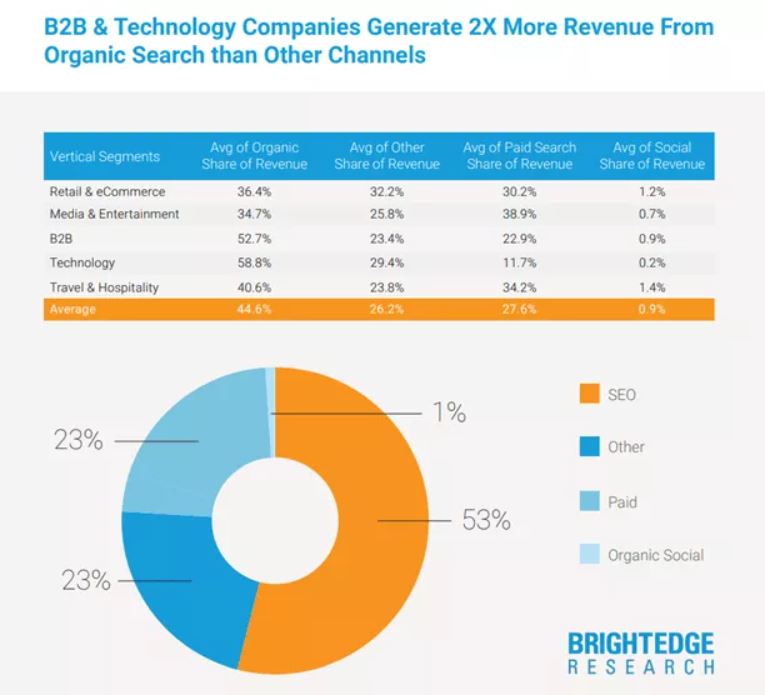
https://videos.brightedge.com/research-report/BrightEdge_ChannelReport2019_FINAL.pdf
Lastly, an SEO consultant can save you a lot of time and effort. Optimizing your website for search engines is a complex and time-consuming task. Hiring an experienced consultant means that you can focus on running your business while someone else takes care of your website’s SEO.
What does an SEO consultant do?
The specific tasks that an SEO consultant performs will depend on the needs of their client. However, there are some common activities that most consultants undertake:
1. Conducting keyword research.
This involves finding and analyzing the keywords that potential customers are using to search for products or services like yours. On top of this, they usually plan out a calendar of keyword-targeted content to help improve your website’s ranking for these terms.
2. Optimizing website content.
Once the target keywords have been identified, the consultant will help you optimize your website’s title tags, metatags, headings, and other elements to make your site more visible to search engines.
They will help you optimize your website for on-page SEO factors like keyword density, anchor text, and internal linking. On the other hand, if you need help with off-page SEO, the consultant can assist you with link building and social media marketing.
They should be able to provide your high-quality links from authority websites, which will help improve your website’s link popularity and search engine rankings.
3. Analyzing website traffic.
The consultant will use Google Analytics and other tools to track your website’s traffic and performance in SERPs. They will then provide you with detailed reports on your progress and make recommendations for further improvements.
4. Providing consulting and advice.
In addition to the above tasks, the consultant will also provide you with general advice and guidance on how to improve your website’s SEO. This may include recommendations on changes to your website’s design or structure, as well as suggestions for developing better content.
5. Measuring results.
Finally, the consultant will help you measure the results of your SEO efforts. They will track your website’s traffic and rankings over time and provide you with reports on your progress.
6. Providing ongoing support.
The consultant will typically provide you with monthly reports and be available to answer your questions and address any concerns you have.
How to Find a Good SEO Consultant
Not all SEO consultants are created equal. When choosing a consultant, it’s important to select someone who has experience in your industry and can offer a tailored solution for your specific needs.
Here are a few tips to help you find a good SEO consultant:
- Do your research: Before hiring a consultant, take some time to research the individual or agency. Look for online reviews and testimonials from previous clients.
- Ask for referrals: If you know someone who has used an SEO consultant in the past, ask for a referral.
- Set up a consultation: Once you’ve narrowed down your options, set up a consultation with each of the consultants you’re considering. This will give you an opportunity to get to know them and ask specific questions about their experience and approach.
- Get a proposal: Once you’ve selected a consultant, be sure to get a written proposal outlining the specific services they will provide and the costs involved.
- Check references: Before making your final decision, be sure to check references from past clients. This will give you an idea of what it’s like to work with the consultant and whether they’re likely to deliver on their promises.
In a nutshell, when it comes to choosing an SEO consultant, it’s important to select someone who has experience in your industry and can offer a tailored solution for your specific needs.
10 Questions to Ask When Hiring an SEO consultant
Now that you have an idea of what an SEO consultant does, you may be wondering how to select the right one for your needs. Here are 10 questions to ask when hiring an SEO consultant:
1. What is your approach to SEO?
By asking this question, you’ll get an idea of the consultant’s philosophy and approach to SEO. This will help you determine whether they’re a good fit for your needs.
2. What is your experience in my industry?
It’s important to select a consultant who has experience in your industry. This way, they’ll be familiar with the unique challenges and opportunities you face.
3. What is your experience with my type of business?
In addition to industry experience, it’s also important to select a consultant who has experience working with businesses of your size and type. This way, they’ll be familiar with the specific challenges and needs you face.
4. What is your track record of success?
When it comes to SEO, results are everything. Be sure to ask the consultant about their track record of success and request case studies or examples of their work.
5. What services do you offer?
Not all consultants offer the same services. Be sure to ask about the specific services the consultant offers and whether they’re a good fit for your needs.
6. What are your rates?
SEO consulting rates can vary widely, so be sure to ask about the cost of services upfront. In addition, be sure to ask about any additional costs or fees that may be involved.
7. What is your timeline for results?
SEO is a long-term strategy, so don’t expect overnight results. However, it’s important to have an idea of the consultant’s timeline for seeing results. This will help you set expectations and plan accordingly.
8. What are the risks and potential downsides of working with you?
No SEO strategy is without risk. Be sure to ask the consultant about the potential risks and downsides of working with them. This will help you weigh the pros and cons of their services.
9. What are your terms of service?
Before signing on with a consultant, be sure to review their terms of service. This will help you understand the scope of their services and your rights as a client.
10. Do you have any references I can contact?
Before making your final decision, be sure to ask the consultant for references from past clients. This will give you an idea of what it’s like to work with the consultant and whether they’re likely to deliver on their promises.
Frequently Asked Questions:
Are SEO services worth it?
The short answer is yes. SEO services can improve your visibility in search engine results, helping you to reach more customers and grow your business.
Depending on your metrics, the ROI of SEO can vary. However, even a small improvement in your search engine ranking can result in a significant increase in traffic and leads.
According to data, over 50% of traffic goes to the first result in Google, and 75% of users never scroll past the first page. So, even a small improvement in your ranking can have a big impact on your traffic levels.
How many hours should my SEO consultant spend?
This depends on the scope of your project and the size of your website. Generally speaking, most SEO consultants will spend 10-20 hours per week on a small to a medium-sized website, and 20-40 hours per week on a large website.
Keep in mind that these are just averages, and your consultant may need to spend more or less time depending on the specifics of your project.
How much do SEO consultants make?
In 2022, the average salary for an SEO consultant in the United States is around 60,000 a year, which is around $28 an hour. However, this number can vary widely depending on experience, location, and other factors.
The following are the cities with the highest average salary for an SEO Consultant:
https://www.ziprecruiter.com/Salaries/SEO-Consultant-Salary
How do I use SEO to grow my business?
SEO leads to business growth due to a number of factors:
It can help you reach your target audience.
SEO doesn't only help your audience lead to your website, but a detailed SEO campaign, will help you target the right kind of audience for your products and services.
An SEO will conduct keyword research that will allow you to identify the words and phrases your target market is searching for when they're looking for businesses like yours.
For example, if you are selling cars, an experienced SEO will target keywords like "buy a car" or "looking for a car dealer near me."
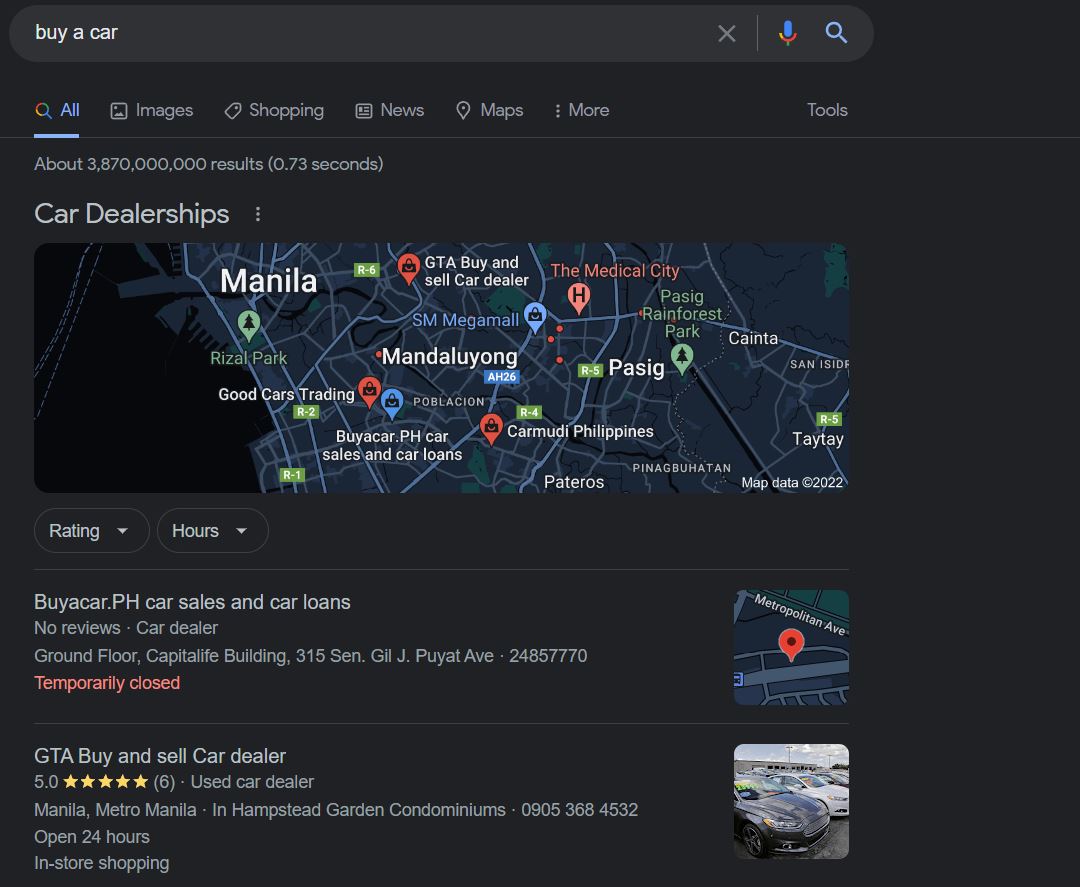

SEO helps build qualified leads
SEO is an inbound marketing strategy, which means it helps you attract customers rather than interrupt them with ads. And, since SEO leads are already interested in what you have to offer, they're more likely to become paying customers.
Leads that you earned through SEO have 14.6 close rates, compared to other traditional marketing methods averaging 1.7 close rates.
It can help you improve your brand awareness and build trust.
The higher you rank in search engine results, the more visible your brand becomes. And the more visible your brand is, the more likely people are to trust it.
Improved brand awareness and trust can lead to more website visitors, social media followers, and customers.
It can help you generate more revenue.
More website visitors and leads can lead to more sales and revenue for your business. In fact, businesses that use SEO grow at a rate of 20% faster than businesses that don't.
SEO helps you beat your competition.
If your competitors are using SEO and you're not, they're likely to rank higher than you in search engine results. This means they'll get more website visitors, leads, and customers—while you fall behind.
SEO is a long-term strategy and provides long-term value.
Unlike some marketing strategies, SEO is not a short-term fix. It takes time to see results. However, once you do start seeing results, they tend to be long-lasting. This makes SEO a great investment for your business.
SEO is an ever-changing landscape, which means there's always something new to learn.
The world of SEO is constantly changing as Google updates its algorithm and new technologies emerge. This can be a challenge for businesses that are trying to keep up with the latest trends. However, it also provides an opportunity for businesses to stay ahead of their competitors by investing in SEO.
SEO is a complex and ever-changing field, but it is an essential part of any business's growth strategy. An experienced SEO consultant can help you navigate the landscape and make the most of this powerful tool.
Getting an SEO consultant is an investment
With over a billion searches daily, if you're not using SEO to grow your business, you're missing out on an essential piece of the puzzle.
SEO will help you reach your target audience, build qualified leads, improve brand awareness and trust, generate more revenue, and beat your competition.
While it takes time to see results, the long-term value of SEO makes it a worthwhile investment for any business.
This means that hiring an SEO consultant can be a great way to boost your business growth. Partnering with an SEO consultant can help you achieve all of the benefits of SEO while freeing up your time to focus on other aspects of your business.
How to Make A Content Outline
Content creation is one of the most important aspects of any digital marketing strategy. In fact, eMarketer finds three-quarters of surveyed marketers create at least one piece of content material every 24 hours.
After all, without content, there would be no way to attract and engage an audience.
One of the best ways to ensure that your content is effective is to create a content outline. This will help you to organize your thoughts and ideas, and to ensure that your content is focused and well-targeted.
What is a Content Outline?
A content outline is a document that helps you plan and organize your content. It's like a roadmap for your content, and it can be helpful to have one before you start content writing.
A content outline should include:
- The topics you will cover
- The format of your content (e.g., blog post, infographic, video)
- The target audience for your content
- The main points you want to make in each piece of content
- Any supporting information or data you need to include
- Any keywords or phrases you want to target
- The call to action for each piece of content
Why Make a Content Outline?
There are several reasons why you should make a content outline before you start writing:
1. It will help you focus your ideas.
Creating a content outline ahead of time will help you to focus your ideas and ensure that your content is on point. It's easy to get sidetracked when you're writing, but if you have a content outline, you can always refer back to it to make sure you're staying on track.
2. It will save you time in the long run.
A content outline may take some time to create, but it will save you time in the long run. Once you have a content outline, you won't have to waste time brainstorming topics or trying to figure out what to write next.
3. It will help you create better content.
When you make a content outline, you have to think carefully about your target audience and what you want to achieve with your content. This will help you create better, more targeted content that is more likely to be successful.
4. It will make it easier to repurpose your content.
If you ever want to repurpose your content (e.g., turn a blog post into a video), having a content outline will make it much easier. You'll already have all of the information you need, so you can simply adapt it to the new format.
5. It will help you stay organized.
Content outlines help to keep your thoughts and ideas organized, so you can easily find what you're looking for when you need it. This is especially helpful if you're working on multiple pieces of content at the same time.
How to Write a Content Outline (5 Easy Steps)
Now that you know why you should make a content outline, let's take a look at how to do it in 5 easy steps.
Step 1: Brainstorm content ideas.
The first step is to brainstorm content ideas. Think about the topics you want to cover and the format you want to use (e.g., blog post, video, infographic).
If you're having trouble coming up with blog post ideas, try using a tool like Google Trends or BuzzSumo to find popular topics in your industry.
The best ideas are usually what people are already searching for. You can also check social media channels like Reddit, Twitter, and Facebook to see what people are talking about.
Step 2: Create and organize a list of main ideas.
Once you have a list of content ideas, it's time to start narrowing them down and flesh out your ideas. Create a list of main ideas for each piece of content, and then choose the most important ones.
Step 3: Finalize the structure.
Once you have your main ideas, it's time to start organizing them. Group related ideas together, and then order them in a way that makes sense. If you're creating a blog post, for example, you might want to start with an introduction and then move on to the body of the article.
Step 4: Fill in the details.
Now that you have your main ideas finalized, it's time to start filling in the details. For each main idea, make a note of any supporting information or data you need to include. This could be statistics, research, case studies, etc. that help to support your points.
Step 5: Revise and adjust.
Once you have all of your ideas down on paper, it's time to take a step back and revise your outline. Make sure everything flows smoothly and that your content is on point. If you need to, add or remove ideas as necessary.
Now that you know how to write a content outline, it's time to get started! Just remember to keep your target audience and goals in mind as you brainstorm ideas and outline the main points of your content.
Content Outline Free Templates
If you need a little help getting started, we've created 5 free content outline templates that you can use. Feel free to use the templates below that's most relevant to your project and fill it out with your own information.
1. Blog Post Outline Template
If you're writing a blog post, this outline template will help you to organize your thoughts and structure your post in a way that is easy to read and understand.
Blog Post Title: Start with the main header. Then, add a subheader for each main point.
Introduction: Introduce the topic of your blog post and give an overview of what will be covered.
Main Point 1: State your first main point and supporting information.
Main Point 2: State your second main point and supporting information.
Main Point 3: State your third main point and supporting information.
Conclusion: Summarize the main points of your blog post and include a call to action.
2. Video Outline Template
If you're creating a video, this outline template will help you to organize your thoughts and structure your video in a way that is easy to follow.
Short introduction: Start with a short introduction that will grab the viewer's attention.
Main points: Outline the main points that you want to cover in your video.
Call to action: End your video with a call to action, such as subscribing to your channel or following you on social media.
3. eBook Outline Template
If you're writing an eBook, this outline template will help you to organize your thoughts and structure your book in a way that is easy to follow.
Table of Contents: Include a table of contents at the beginning of your eBook so readers know what topics will be covered.
Introduction: Introduce the topic of your eBook and give an overview of what will be covered.
Main Points: State your main points and supporting information.
Conclusion: Summarize the main points of your eBook and include a call to action.
4. Whitepaper Outline Template
If you're writing a whitepaper, this outline template will help you to organize your thoughts and structure your paper in a way that is easy to follow.
Table of Contents: Include a table of contents at the beginning of your whitepaper so readers know what topics will be covered.
Introduction: Introduce the topic of your whitepaper and give an overview of what will be covered.
Main Points: State your main points and supporting information.
Conclusion: Summarize the main points of your whitepaper and include a call to action.
5. Website Copy Outline Template
If you're writing copy for a website, this outline template will help you to organize your thoughts and structure your copy in a way that is easy to read and understand.
Homepage: Write the headline, subheadline, and body copy for the homepage of your website.
About Us Page: Write the headline, subheadline, and body copy for the About Us page of your website.
Product/Service Page: Write the headline, subheadline, and body copy for the Product/Service page of your website.
Contact Us Page: Write the headline, subheadline, and body copy for the Contact Us page of your website.
Now that you have a better understanding of how to create a content outline, it's time to start brainstorming ideas and organizing your thoughts. Use the templates above to get started, and don't be afraid to get creative with it. The most important thing is that you take the time to plan out your content before you start writing.
Frequently Asked Questions:
What are the main rules of outlining?
Rule #1: Start with the Main Heading
The first rule of outlining is to start with the main heading. This will be the title of your blog post, video, eBook, etc. Once you have the main heading, you can start adding subheadings for each main point.
Rule #2: Add Subheadings for Each Main Point
The second rule of outlining is to add subheadings for each main point. This will help to organize your thoughts and make it easy for readers to follow along.
Rule #3: Include Supporting Information
The third rule of outlining is to include supporting information for each point. This could be statistics, quotes, data, etc. that support your main points.
Rule #4: Include a Call to Action
The fourth and final rule of outlining is to include a call to action in your conclusion. This could be a link to your website, a free download, etc.
Here are a few tips for writing an effective outline:
- Start with the Main Heading
- Add Subheadings for Each Main Point
- Include Supporting Information
- Include a Call to Action
- Be Concise and to the Point
- Use Simple Language
- Stick to One Topic per Outline
- Make Sure Your Outline is Logical
- Edit and Revise
How many main ideas should an outline have?
An outline should have as many main points as necessary to cover the topic at hand. However, it's important to keep in mind that each main point should be supported by evidence and data.
Here are some brainstorming techniques that you can use to generate ideas for your content.
1. Brainstorming with a partner or group
If you're having trouble coming up with ideas on your own, try brainstorming with a partner or group. This will help to stimulate new ideas and get the creative juices flowing.
2. Use a mind map
Another great way to brainstorm content ideas is to create a mind map. This is a visual representation of your thoughts and ideas. You can start with a central topic and branch out from there.
3. Keep a content ideas journal
One of the best ways to generate content ideas is to keep a content ideas journal. This is a place where you can write down any and all ideas that come to mind, no matter how crazy they may seem. The more ideas you have, the better!
4. Use online resources
There are tons of great online resources that can help you brainstorm content ideas. Try using Google Images or Pinterest to get started.
5. Take inspiration from other content creators
If you're having trouble coming up with original ideas, try taking inspiration from other content creators. Look for content that is similar to what you want to create and use it as a starting point.
What are the different outlining styles?
There are three main outlining styles:
- Alphanumeric Outline
- Full-sentence Outline
- Decimal Outline
Each style has its own set of rules and guidelines. Be sure to choose the style that works best for you and your project.
What is an alphanumeric outline?
An alphanumeric outline is a type of outline that uses letters and numbers to organize ideas. The first level of an alphanumeric outline is denoted by Roman numerals, while the second level is denoted by Arabic numerals. Each subsequent level is denoted by a lowercase letter.
What is a full-sentence outline?
A full-sentence outline is a type of outline that uses complete sentences to describe each main point. This type of outline is helpful when you need to present your ideas in a more detailed way.
What is a decimal outline?
A decimal outline is a type of outline that uses numbers to organize ideas. The first level of a decimal outline is denoted by Arabic numerals, while the second level is denoted by decimals. Each subsequent level is denoted by a lowercase letter.
The best way to choose an outlining style is to experiment with each one and see which works best for you and your project. There is no right or wrong answer, so go with whatever feels most natural to you.
Once you have chosen a style, be sure to stick with it throughout your entire project. This will help to keep things organized and prevent confusion.
What are the three purposes of outlining?
The three main purposes of outlining are to:
1. Help you organize your thoughts
Outlining can help you to organize your thoughts and ideas in a logical way. This will make it easier to write your content and stay on track.
2. Help you find gaps in your knowledge
Outlining can also help you to identify gaps in your knowledge. If you're having trouble coming up with ideas for a certain section, it may be because you don't know enough about the topic. Doing some additional research can help to fill in these gaps.
3. Help you save time
Another purpose of outlining is to save you time. Once you have a good outline, the writing process will be much quicker and easier. This is because you'll already have a plan to follow, so there won't be any need to stop and figure things out as you go.
Sponsorship Marketing - Definitive Guide for Small Business Owners
What is sponsorship marketing?
Sponsorship marketing is a form of marketing in which a company sponsors an event or activity in order to promote its brand or product.
Sponsorship is more of a form of marketing than advertising, as it seeks to persuade customers to make purchases by sharing certain information about a product or company.
Sponsorship spending grew by a remarkable $65.8 billion worldwide in 2018. Additionally, around 40% of organizations in the US spend around 20% of their total event budget on sponsorships.
These numbers alone should speak volumes about how sponsorship is an important aspect of every organization seeking to promote their business or brand.
Types of sponsorship marketing
There are several types of sponsorship marketing, each with its own advantages and disadvantages. The following are some of the most common types of sponsorship marketing:
Cash sponsorship
Cash sponsorships involve giving money to an organization in exchange for promoting your brand or product. The advantage of this type of sponsorship is that it’s a straightforward way to gain exposure for your brand. However, the disadvantage is that you have less control over how your brand is promoted and what values are associated with it.
In-kind sponsorship
In-kind sponsorship involves giving products or services to an organization in exchange for promoting your brand or product. The advantage of this type of sponsorship is that you have more control over how your brand is promoted and what values are associated with it. However, the disadvantage is that it can be more difficult to negotiate than cash sponsorship.
Event sponsorship
Event sponsorship involves sponsoring a specific event, such as a concert, sports game, or festival. The advantage of this type of sponsorship is that it allows you to gain exposure for your brand through a high-profile event. However, the disadvantage is that you have less control over how your brand is promoted and what values are associated with it.
Cause sponsorship
Cause sponsorship involves sponsoring a specific cause, such as environmentalism or healthcare. The advantage of this type of sponsorship is that it allows you to gain exposure for your brand while also promoting positive values. However, the disadvantage is that you have less control over how your brand is promoted and what values are associated with it.
Talent sponsorship
Talent sponsorship involves sponsoring a specific talent, such as an athlete, musician, or artist. The advantage of this type of sponsorship is that it allows you to gain exposure for your brand through a high-profile talent. However, the disadvantage is that you have less control over how your brand is promoted and what values are associated with it.
Choosing the right type of sponsorship marketing
There is no wrong or right type of sponsorship marketing, as each type has its own advantages and disadvantages. The key is to choose the type of sponsorship marketing that best suits your brand’s needs and objectives.
For instance, if you want to gain exposure for your brand through a high-profile event, event sponsorship may be the best option. However, if you want to promote positive values along with your brand, cause sponsorship may be the better option.
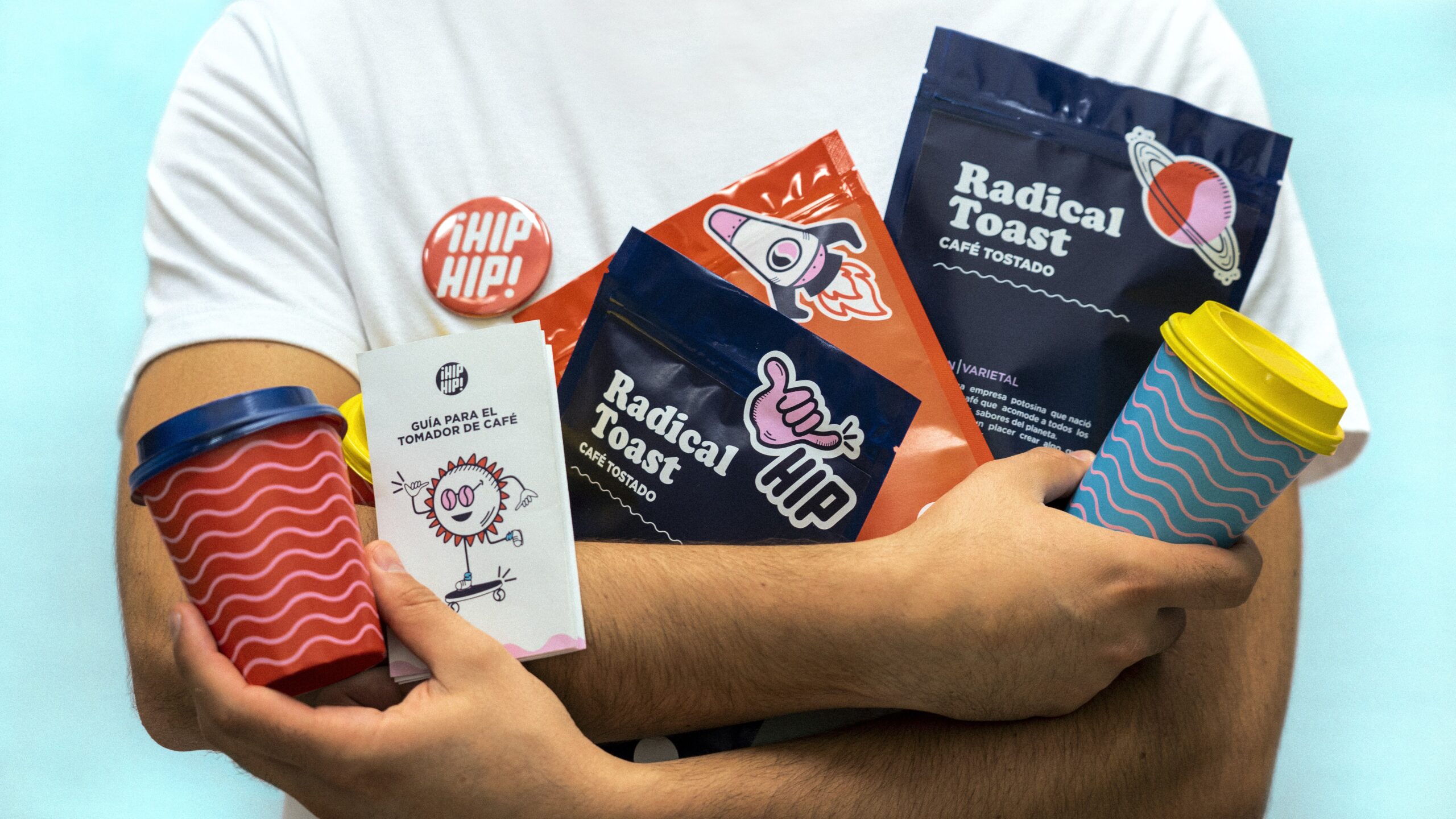

It’s also important to consider the organization you want to sponsor. Make sure that the organization is a good fit for your brand and that its values align with your own. You don’t want to sponsor an organization that could damage your brand’s reputation.
Why do companies do sponsorships?
There are several reasons why sponsorship marketing has become so popular in recent years. Here are just 5 of the mains ones:
- It’s an effective marketing tool - Sponsorship marketing is an effective way to reach new audiences and promote your brand or product. For instance, sponsoring celebrities and athletes could boost your brand's reach as their followers could bring new followers to your brand.
- It builds brand awareness - Sponsorship marketing can help you build brand awareness and create goodwill among potential customers. Take the example of a company sponsoring a charity event. Customers will see that your company is generous and cares about giving back to the community, which could make them more likely to purchase your products or services.
- It enhances brand image - Sponsorship marketing can help improve your brand image by associating your brand with positive values. It could bring new light to your brand's reputation and make it more appealing to potential customers.
- It’s cost-effective - Sponsorship marketing can be more cost-effective than other marketing strategies, such as advertising. This is because you only pay for the sponsorship, not for the ad space or time. Additionally, sponsorships often come with perks, such as free tickets to the event or product discounts, which can save you money.
- It’s a long-term strategy - Sponsorship marketing is a long-term marketing strategy that can provide continuous exposure for your brand or product. For instance, if you sponsor a sports team, your brand will be associated with the team for as long as the team remains active in the scene.
How can small businesses use sponsorship marketing?
There are many ways that small businesses can use sponsorship marketing to promote their brand or product. Here are just 5 of the most popular:
- Sponsoring local events - Many small businesses sponsor local events, such as festivals, parades, or fairs. This is a great way to gain exposure for your brand in the community and build goodwill among potential customers.
- Sponsoring local sports teams - Sports teams are always looking for sponsors, so this is a great option for small businesses. This type of sponsorship will give you continuous exposure for your brand as the team competes in its events.
- Sponsoring charities - Charity sponsorships are a great way to promote positive values along with your brand. This type of sponsorship will show potential customers that your company cares about giving back to the community.
- Exhibiting at trade shows - Trade shows are a great way to reach new audiences and promote your brand or product. Many small businesses exhibit at trade shows to gain exposure for their business.
- Advertising in local publications - Local publications, such as newspapers, magazines, and websites, are always looking for advertisers. This is a great way to reach potential customers in your community and promote your brand or product.
For more sponsorship marketing tips, you can check out this guide on local link building strategies.
Sponsorship Marketing Plan: How To Do It Right
Now that you know the benefits of sponsorship marketing and how small businesses can use it, it’s time to create a sponsorship marketing plan. Here’s how to do it right:
Step 1: Define your goals.
Before you start reaching out to potential sponsors, you need to define your goals. What do you hope to achieve with your sponsorship marketing campaign? Do you want to increase brand awareness, build goodwill, or improve your brand image? Once you know your goals, you can start reaching out to potential sponsors.
Step 2: Research potential sponsors.
Once you know your goals, you need to research potential sponsors that could help you achieve them. There are many factors to consider when choosing a sponsor, such as the size of the company, the products or services they offer, their values, and their target audience. You should also consider the benefits that each sponsor can provide, such as exposure to their audience, discounts on products or services, or free tickets to events.
Step 3: Create a sponsorship proposal.
Once you’ve chosen a potential sponsor, you need to create a sponsorship proposal. This document should outline the benefits of sponsoring your event or activity and how it will help them achieve their goals. Be sure to include information about your audience, your marketing plans, and your sponsorship package options.
Step 4: Negotiate the terms of the sponsorship.
After you’ve created a sponsorship proposal, you need to negotiate the terms of the sponsorship with the potential sponsor. This includes deciding on the level of support they will provide, what benefits they will receive, and how long the sponsorship will last.
Step 5: Activate your sponsorship.
Once you’ve negotiated the terms of the sponsorship, it’s time to activate it. This includes developing marketing materials, such as logos and banners, and promoting the sponsorship to your audience. You should also create a post-event report that outlines the results of the sponsorship and how it helped you achieve your goals.
Sponsorship Marketing Examples
Now that you know the benefits of sponsorship marketing and how to create a sponsorship marketing plan, let’s take a look at some sponsorship marketing examples.
Coca-Cola
Coca-Cola is one of the most well-known brands in the world and they use sponsorship marketing to reach new audiences. For example, they sponsor the Olympics and FIFA World Cup, which give them exposure to millions of people around the world.
McDonald’s
McDonald’s is another well-known brand that uses sponsorship marketing to reach new audiences. They sponsor events like the Olympics and the FIFA World Cup, as well as local events like soccer tournaments and marathons.
Nike
Nike is a leading athletic apparel brand that uses sponsorship marketing to reach new audiences. They sponsor athletes, teams, and events, such as the Olympics and FIFA World Cup.
Samsung
Samsung is a leading electronics brand that uses sponsorship marketing to reach new audiences. They sponsor events like the Olympic Games and the FIFA World Cup, as well as product placement in movies and TV shows.
Subway
Subway is a leading fast-food chain that uses sponsorship marketing to reach new audiences. They sponsor events like marathons and triathlons, as well as local sports teams and schools.
Sponsorship Marketing Proposal Template [FREE]
Cover Letter:
The first page of your proposal should be a cover letter that introduces your organization and briefly summarizes your proposal.
Example Cover Letter:
Dear ________________,
I am writing to introduce you to ______________________________ (name of organization/event). We are a ___________________________ (type of organization) that is dedicated to ___________________________ (purpose of organization). We are hosting a ___________________________ (type of event) on ___________________________ (date of event) and we are looking for sponsors to help us make it a success.
As a sponsor, you would receive ___________________________ (exposure/benefits). This is a great opportunity to ___________________________ (connect with our audience/promote your brand/support our cause). We are confident that this event will be a success and we would be honored to have your support.
Thank you for your time and consideration. If you have any questions, please do not hesitate to contact me at ___________________________ (contact information).
Executive Summary:
The executive summary should be a one-page overview of your sponsorship marketing proposal. It should include your goals, objectives, target audience, and proposed sponsorship package.
One-Page Sponsorship Proposal Template
- Introduction
- Event/Organization Overview
- Sponsorship Opportunities
- Benefits of Sponsorship
- Marketing Plan
Proposed Sponsorship Package:
This section should outline the benefits that your sponsor will receive by supporting your organization. Be sure to include information on your target audience, media coverage, and any other benefits that you can offer.
You can create a table or list to outline your sponsorship package. Be sure to include pricing information and a call-to-action (CTA).
Sample Sponsorship Package:
Gold Level Sponsorship - $5,000
- Logo placement on event website
- Logo placement on all print and digital marketing materials
- Prominent logo placement on event signage
- Logo placement on event t-shirts
- Complimentary booth space at event
- 10 complimentary tickets to event
Silver Level Sponsorship - $2,500
- Logo placement on event website
- Logo placement on all print and digital marketing materials
- Logo placement on event signage
- Logo placement on event t-shirts
- 5 complimentary tickets to event
Bronze Level Sponsorship - $1,000
- Logo placement on event website
- Logo placement on all print and digital marketing materials
- Logo placement on event t-shirts
- 2 complimentary tickets to event
Frequently Asked Questions:
How does sponsorship increase sales?
Sponsorship can increase sales in a number of ways. First, it can create awareness for your brand and increase brand recognition. Second, it can help you reach new audiences that may be interested in your products or services. Third, it can build goodwill and positive associations with your brand. Finally, it can provide you with an opportunity to upsell and cross-sell your products or services.
What is the difference between sponsorship and direct marketing?
The main difference between sponsorship and direct marketing is that sponsorship is a long-term investment, while direct marketing is a short-term strategy. Sponsorship also allows you to build brand awareness and create positive associations with your brand, while direct marketing is focused on generating immediate sales.
What makes a good sponsorship?
A good sponsorship should align with your brand and marketing goals. It should also reach your target audience and provide you with a way to connect with them on a deeper level. Finally, it should offer you value for your investment, whether that be in the form of brand awareness, sales, or goodwill.
What is the main goal of a sponsorship presentation?
The main goal of a sponsorship presentation is to convince potential sponsors to invest in your event or organization. To do this, you will need to provide an overview of your event or organization, as well as the benefits that sponsors will receive by supporting you. You will also need to have a solid marketing plan in place that outlines how you will reach your target audience and generate awareness for your event or organization.
What makes a sponsorship successful?
There are a number of factors that can contribute to a successful sponsorship. First, it is important to have clear and achievable goals. Second, your sponsorship package should be attractive to potential sponsors and provide them with value for their investment. Finally, you need to have a solid marketing plan in place that will reach your target audience and generate awareness for your event or organization.
What are some common goals of sponsorship?
Some common goals of sponsorship include increasing brand awareness, reaching new audiences, building goodwill, and generating sales.
Why your marketing plan should include sponsorship?
Your marketing plan should include sponsorship because it is a proven way to reach your target audience, build brand awareness, and generate sales. Sponsorship also allows you to build goodwill and create positive associations with your brand.
15 Places To Advertise Your Business Online (For Small Business Owners)
The marketing world is dynamic and always changing, which is why small businesses need to be proactive and adapt their strategies as new platforms and trends emerge.
And while traditional marketing methods like print, radio, and TV advertising are still viable options, nowadays, most consumers do their research online before making a purchase, which is why it’s so important for small businesses to have a strong online presence.
That's where online advertising comes in. By placing ads on popular websites and search engines, small businesses can reach a larger audience and generate more leads and sales.
In fact, by 2026, advertising online will be a $335 billion industry. That being said, every small business should be taking advantage of online advertising.
To determine which ones are the best for your business, you need to consider your budget, your target audience, your location, and your advertising goals.
In this article, you will learn:
Table of Contents
15 Advertising Opportunities For Small Business Owners
Here are 15 different ideas for places to advertise your business online. These platforms are all effective and affordable, so you can choose the one that best suits your needs.
1. Google
As one of the largest search engines in the world, Google receives billions of searches every day.
That means there’s a good chance that people looking for products or services like yours are using Google to find what they need.
Google ads have taken a giant step forward since it became the leading local business directory. According to Corporate Eye, Google makes up almost 97% of the company's income through Google advertising.
With Google Ads, you can create text, image, and video ads that show up on Google’s search engine results pages (SERPs) when people search for keywords related to your business.
You only pay for your ad when someone clicks on it, so you can control your budget and only spend what you’re comfortable with.
Types of Google Ads:
Text Ads: These are the traditional Google ads that you see on the SERPs. They consist of a headline, two descriptions, and a URL.
Image Ads: These ads can appear on the SERPs and on websites that participate in Google’s Display Network. They can be static or animated and usually include images and/or videos.
Video Ads: These are video ads that appear on YouTube and websites that participate in the Google Display Network.
2. Facebook
Facebook is the largest social media platform in the world, with 2.9 billion monthly active users.
It’s a great place to advertise your business because you can target your ads to people based on their interests, demographics, and even behaviors.
For example, if you want to reach people who live in a certain area and are interested in your type of product or service, you can create a Facebook ad campaign specifically for them.
You can also use Facebook ads to boost your posts, so more people see them in their newsfeeds. When you boost a post, it appears as an ad on people’s timelines.
Types of Facebook Ads:
Boosted Posts: These are posts from your Facebook page that you pay to appear as an ad in people’s newsfeeds.
Promoted Page Likes: These ads appear in people’s newsfeeds and are designed to get more people to like your page.
Clicks to Website: These ads send people to your website from Facebook. They can appear in people’s newsfeeds, on the right side of the screen, or as an ad in Instant Articles.
Website Conversions: These are similar to Clicks to Website ads but are designed to get people to take a specific action on your website, such as filling out a form or buying a product.
3. Instagram
With over 1 billion monthly active users, Instagram is a great place to reach potential customers, especially if you’re targeting millennials or Gen Z.
Instagram ads work similarly to Facebook ads. You can target people based on their interests, demographics, and behaviors.
You can also use Instagram ads to promote your posts, so they appear as ads in people’s feeds.
Types of Instagram Ads:
Photo ads: These are static images that you can use to show off your products or services.
Video ads: Through reels or short videos, you can show potential customers a behind-the-scenes look at your business or showcase your products in action.
Carousel ads: These are ads that contain multiple images or videos that people can scroll through. They’re a great way to showcase different products or services that you offer.
Stories ads: These are short videos or images that appear in between people’s Stories. They’re a great way to grab attention and get your message across quickly.
4. Twitter
With over 206 million daily active users, Twitter is another great social media platform for advertising your business.
Twitter ads work similarly to other social media platforms like Facebook and Instagram. You can target people based on their interests, demographics, and behaviors.
You can also use Twitter ads to promote your tweets, so they appear as ads in people’s timelines.
Types of Twitter Ads:
Promoted tweets: These are tweets that you pay to appear as an ad in people’s timelines. For small businesses, this is a great way to get your tweets seen by more people.
Promoted accounts: You can pay to have your Twitter account appear as an ad in the “Who to follow” section on people’s timelines.
Promoted trends: These are trending topics that you pay to appear as an ad on people’s timelines.
5. LinkedIn
LinkedIn is a social media platform specifically for professionals. With over 810 million users, it’s a great place to reach potential customers or clients who are decision-makers in their companies.
LinkedIn ads work similarly to other social media platforms like Facebook and Instagram. You can target people based on their interests, demographics, and behaviors.
You can also use LinkedIn ads to promote your posts, so they appear as ads in people’s feeds.
Types of LinkedIn Ads
There are different types of LinkedIn ads that you can use:
Sponsored content: This is content that you pay to appear as an ad in people’s feeds. It can be a blog post, article, or video.
Text ads: These are short, text-based ads that appear in the right-hand column of people’s LinkedIn feeds.
Display ads: These are banner ads that appear on people’s LinkedIn feeds.
6. Tiktok
While there are many businesses who are hesitant about advertising their business on Tiktok, there are many opportunities for businesses to reach potential customers on the app.
In 2021, Tiktok was the most downloaded app in the world. It has been downloaded 2.6 billion times worldwide, and with over 1 billion monthly active users, it’s a great place to reach potential customers, especially if you’re targeting Gen Z.
TikTok advertisements could be a good investment for you if your business appeals to a younger audience. This isn't the platform for businesses that target older audiences, with 66% of TikTok's users being under 30 (41% are 16–24 years old).
Types of Tiktok Ads:
There are different types of TikTok ads that you can use:
In-feed ads: These are short videos or images that appear in between people’s TikTok videos.
Brand takeovers: These are ads that appear when someone opens the app. They’re a great way to grab attention and get your message across quickly.
Hashtag challenges: These are ads that appear when someone searches for a specific hashtag. They’re a great way to get people engaged with your brand.
7. Reddit
Quite different from the previously mentioned social media platforms, Reddit is a social media platform where people can post content, vote on content, and comment on content on different subreddits. Subreddits are like mini forums on specific topics.
Content that gets the most upvotes rises to the top of the feed, while content with the most downvotes sinks to the bottom. People can also comment on posts, and these comments can be upvoted or downvoted as well.
With over 50 million daily active users, Reddit is a great place to reach potential customers. However, because of its unique format, it can be a challenge to advertise on Reddit.
The best way to advertise on Reddit is through native advertising, which is advertising that is in the same format as the other content on the platform.
New Reddit marketers should be cautious about how they promote their business on Reddit, as the community is quick to call out anything that looks like spam. Breaking simple rules like title structure, linked video length, or image use might result in your post being immediately removed and even your account being banned.
The key to getting success on Reddit is to be truly authentic. Don’t try to hard-sell your product, but rather provide value and be helpful.
8. Youtube
Youtube is a video-sharing site where users can upload, view, and share videos. It’s the second largest search engine after Google, and with over 2 billion monthly active users, It's also an excellent platform to attract new consumers.
As video is one of the most consumed forms of content, it’s no surprise that businesses are using Youtube to reach potential customers. In fact, 6 out of 10 people would rather watch online videos than television.
Successful business owners are using Youtube to create valuable content that educates, entertains, and inspires their target audience. However, with over 500 hours of video being uploaded to Youtube every minute, it can be a challenge to stand out from the crowd.
To be successful on Youtube, you need to create high-quality content that is relevant to your target audience. You also need to be strategic about your marketing and use Youtube ads and SEO to get your videos in front of as many people as possible.
Types of Youtube Ads
Youtube ads come in a few different forms:
Pre-roll ads: These are short ads that play before a video starts. They can be skipped after 5 seconds.
Mid-roll ads: These are ads that play in the middle of a video. They can be skipped after 5 seconds.
Bumper ads: These are short, unskippable ads that play before, during, or after a video.
Overlay ads: These are banner ads that appear on the bottom 20% of a video.
Card ads: These are small ads that appear in the corner of a video.
9. Quora
Quora is a Q&A platform where people can ask questions and get answers from experts in the community. It’s a great place to find out about new products and services, as well as to learn about different topics.
While Quora isn’t traditionally thought of as a social media platform, it can be a great way to connect with potential customers. This is because people come to Quora when they’re looking for information, which means they’re already in the research phase of the buying cycle.
To be successful on Quora, you need to focus on providing value. This means answering questions honestly and helpful, without trying to hard-sell your product.
You should also take advantage of Quora’s targeting features to make sure your content is being seen by people who are most likely to be interested in what you have to offer.
While some may only see it as a Q and A platform, Quora is actually a great way to get in front of your competitors using Quora ads.
Why Use Quora Ads?
There are a few reasons why you would use Quora ads as an additional platform for online advertising:
- Quora is a search engine: This means that when people are looking for information on Quora, they already have the intent to buy your product. This makes Quora a great place to target potential customers who are already interested in your product.
- You can target specific interests: Quora allows you to target your ads to specific interests, which means you can reach people who are more likely to be interested in your product or service.
- You can target specific questions: Quora also allows you to target specific questions, which means you can get your ad in front of people who are already looking for information about your product or service.
Quora Ad Formats:
Quora's advertising formats are:
Promoted answers: These are answers that appear at the top of a question page.
Promoted questions: These are questions that appear in the sidebar of a topic page.
Display ads: These are banner ads that appear on the Quora website.
10. Bing
Bing is a search engine that is owned by Microsoft. It’s the second-largest search engine in the world, with a market share of 20%.
While Bing doesn’t get as much traffic as Google, it’s still a valuable platform for businesses. This is because people who use Bing are generally more affluent and have higher incomes.
This makes Bing a great place to target potential customers who are more likely to be able to afford your product or service.
To be successful on Bing, you need to focus on creating high-quality ads that are relevant to your target audience. You should also use keyword research to make sure your ads are being seen by people who are searching for terms related to your business.
Bing Ads allows you to advertise on both Bing's search network and its partner networks, Yahooo and AOL.
Ad Formats of Bing:
Bing's advertising formats are:
Search ads: These are text-based ads that appear at the top of the Bing search results page.
Display ads: These are banner ads that appear on websites in the Bing network.
11. Pinterest
Pinterest is a powerful traffic-generating tool. It's a marketplace where consumers may discover amazing products, ideas, and solutions to their problems.
As a business, you can take advantage of this by creating pins that showcase your products or services. You can also use Pinterest to drive traffic to your website or blog.
As of this writing, there are 478 million people who use this platform every month to find ideas for their next purchase. That being said, this platform should be added to your online marketing strategy in order to reach your preferred audience.
To be successful on Pinterest, you need to constantly focus on creating high-quality pins that your audience will want to save. You should also use keywords in your descriptions to make sure your pins are being seen by people who are searching for terms related to your business.
Ad Formats of Pinterest:
Pinterest's advertising formats are:
Standard pins: These are pins that appear in the main Pinterest feed.
Promoted pins: These are pins that appear at the top of the Pinterest search results page and in the home feed.
Carousel ads: These are pins that appear in the form of a slideshow.
Video Pin Ads: These are video pins that appear in the main Pinterest feed.
Shopping Pins: These are pins that allow users to purchase products directly from retailers.
App-Install Pins: These pins allow you to link to any Apple Store or Google Play app URL.
12. Waze
Waze is a GPS navigation app that is owned by Google. It’s used by millions of people every day to get around town.
While Waze doesn’t have as many users as Google Maps, it’s still a valuable platform for businesses. This is because people who use Waze are generally more engaged and are more likely to take notice of your ad.
If you're a small business owner who's constantly looking for ideas on how to drive more foot traffic to your store, then Waze might be a good fit for you.
To be successful on Waze, you need to make sure your ad is relevant to the user’s current location.
Waze's advertising formats are:
Branded pins - This serves the same purpose as shop signs: They tell and remind drivers about your business.
Promoted search - Your business will be displayed to large audiences when Waze users search for your name and see all of your locations listed first.
Nearby arrow - Whenever nearby users open the app, this arrow will immediately appear on their screen.
13. Press Releases
A press release is a written statement that is distributed to the media to generate publicity for a product, service, or event.
Press releases can be an effective way to reach your target audience through the media. So whether your business is opening a new branch, launching a new product line, rebranding, or moving to a new location, it's worth it to write and distribute a press release.
When writing a press release, make sure to include the following:
- A catchy headline
- Subheadings
- Bulleted lists
- Quotes from experts or customers
- A call to action
To be successful with press releases, you need to make sure your press release is newsworthy and well-written. You also need to distribute your press release to the right media outlets.
Here are some popular press release distribution platforms:
- PR Newswire
- PRWeb
- Business Wire
- Marketwired
Press releases are not only effective for getting publicity but they can also be used to improve your website's SEO. This is because press releases often contain backlinks to your website.
14. Snapchat
Snapchat is a popular social media app that allows users to share photos and videos with their friends.
While Snapchat doesn’t have as many users as Facebook or Instagram, it’s still a valuable platform for businesses. This is because Snapchat users are generally younger and more engaged than users of other social media platforms.
If you're targeting millennials or Gen Zers, then Snapchat ads should definitely be a part of your marketing strategy.
To be successful on Snapchat, you need to create engaging and creative content. This could include short videos, behind-the-scenes footage, or even just stylish photos.
Snapchat's advertising formats are:
Snap ads: These are short video ads that appear between Stories.
Collection ads: These are full-screen ads that appear in the Discover section.
Filter ads: These are creative filters that can be used by Snapchat users.
Lenses: These are animated effects that can be used by Snapchat users.
15. Whatsapp
Last but not the least, Whatsapp is one of the most popular messaging apps with over 1.5 billion monthly active users.
While Whatsapp doesn't have any in-built advertising features, businesses can still use it to reach their target audiences by creating posts through Facebook ads manager.
Tips on WhatsApp Advertising:
- Keep your messages short and to the point
- Use engaging visuals
- Use a call to action
- Create a sense of urgency
Common FAQs About Places to Advertise Online
How do I advertise my business locally?
There are a number of ways to advertise your business locally. Some common methods include:
- Creating a website or blog and optimizing it for local SEO
- Creating listings on local directories and review sites
- Using social media to promote your business
Where else can I advertise my business for free?
On top of the ones we mentioned above, there are a number of other ways to advertise your business for free. These include:
- Google My Business
- Bing Places
- Apple Maps
- Yelp
- TripAdvisor
How can I promote my business?
There are a number of ways to promote your business online. Some common methods include:
- Social Media Marketing
- Search Engine Optimization: link building, local SEO, mobile SEO
- Content Marketing
- Email Marketing
- Pay-Per-Click Advertising
How do I get my small business noticed?
There are a number of ways to get your small business noticed online.
- Creating a strong social media presence
- Strategizing your local link building strategies for your business
- Optimizing your website for search engines
- Creating informative and shareable content
- Advertising on relevant platforms
- Getting involved in your local community
Where do I find ads?
There are a number of places you can find ads online. Some popular platforms include:
- Google AdWords
- Bing Ads
- Facebook Ads
- Twitter Ads
- Instagram Ads
Are online ads effective?
Online ads can be effective if they are well-targeted and relevant to your audience. According to statistics, 26% of social media users tend to purchase products that they see advertised.
Make sure to test different ad formats and placements to see what works best for your business.
What is an example of online advertising?
Some common examples of online advertising include:
- Search Engine Advertising
- Display Advertising
- Social Media Advertising
- Video Advertising
- Native Advertising
Find the Best Place To Advertise Your Business
Now that you have a better understanding of the different types of online advertising, you can start to identify which platforms will work best for your business.
To get started, we recommend conducting a market analysis to understand your target audience and what type of content they are most likely to engage with. Make sure to consider your budget, business goals, and target audience when choosing the best place to advertise your business.
Once you have this information, you can always start experimenting with different advertising platforms to see what works best for you.
With a little bit of trial and error, you should be able to find the perfect mix of platforms to help you achieve your desired results.

